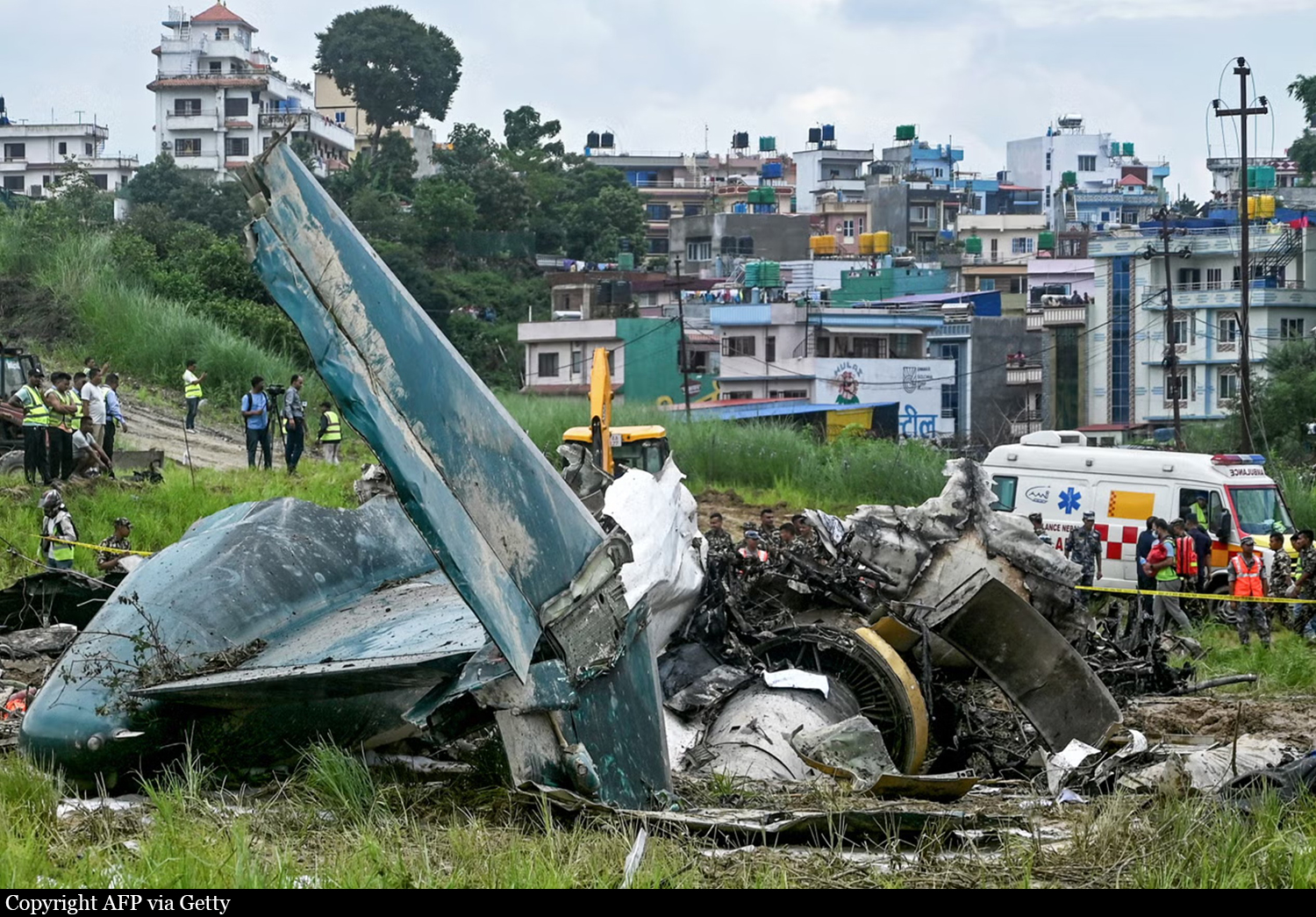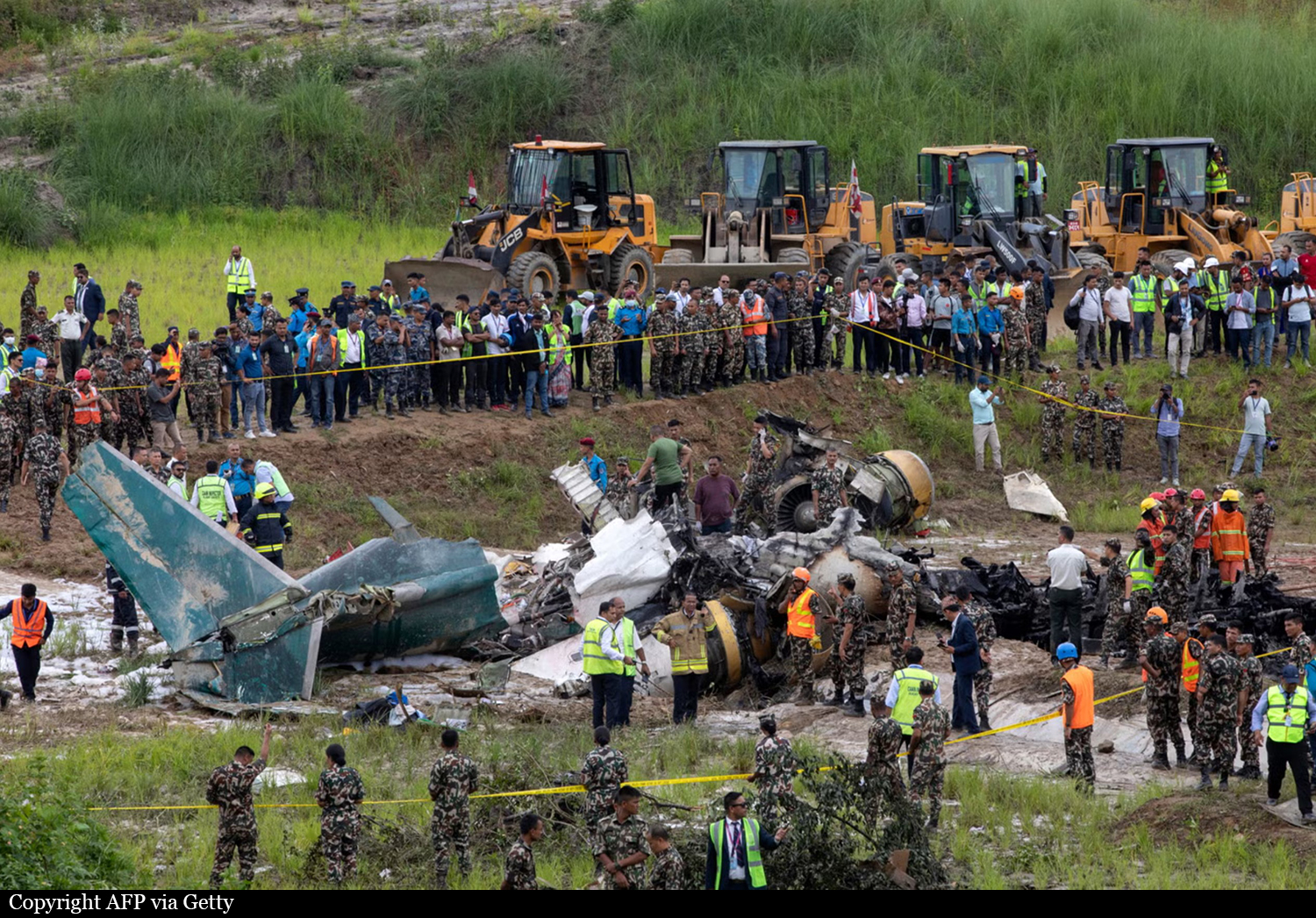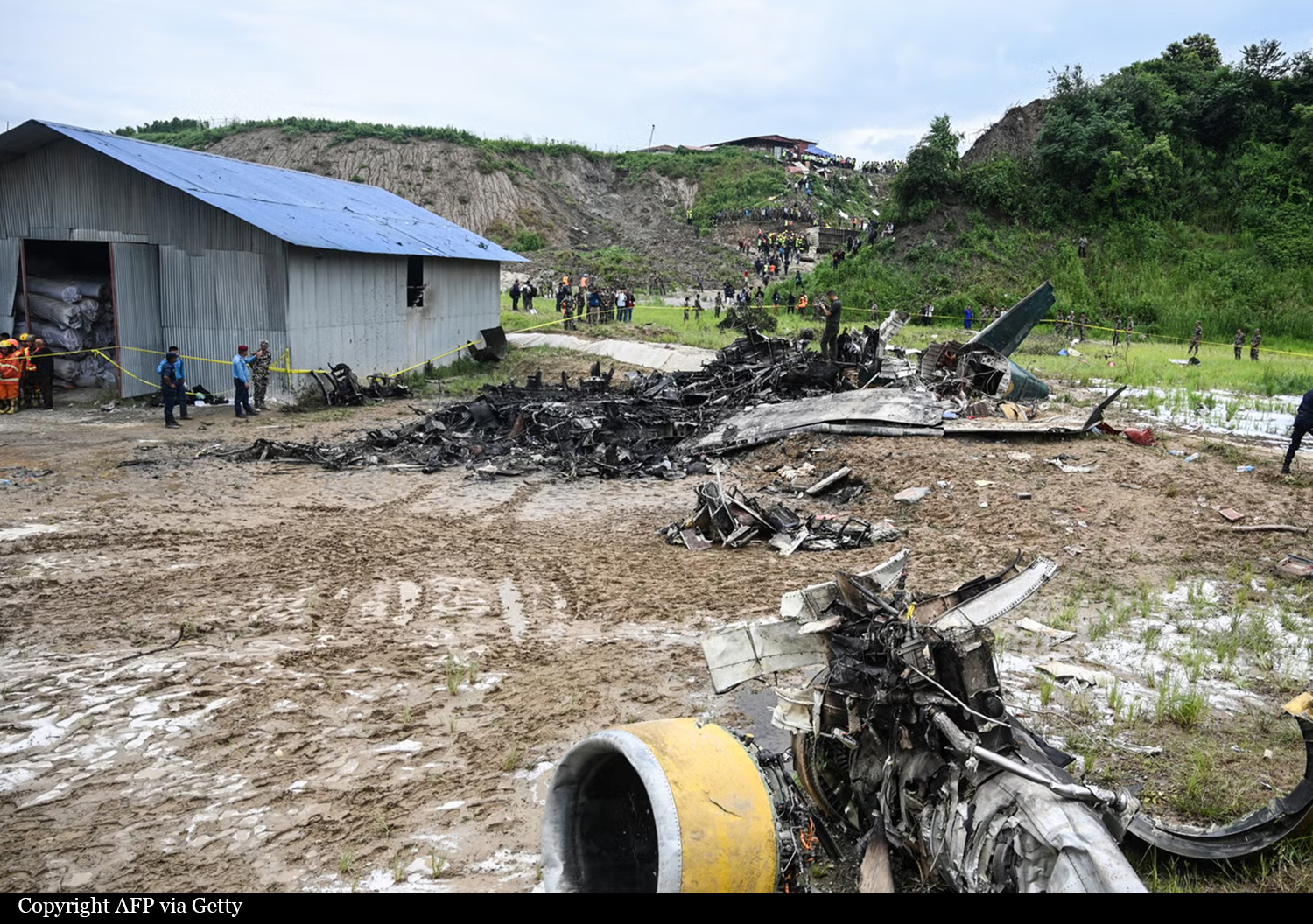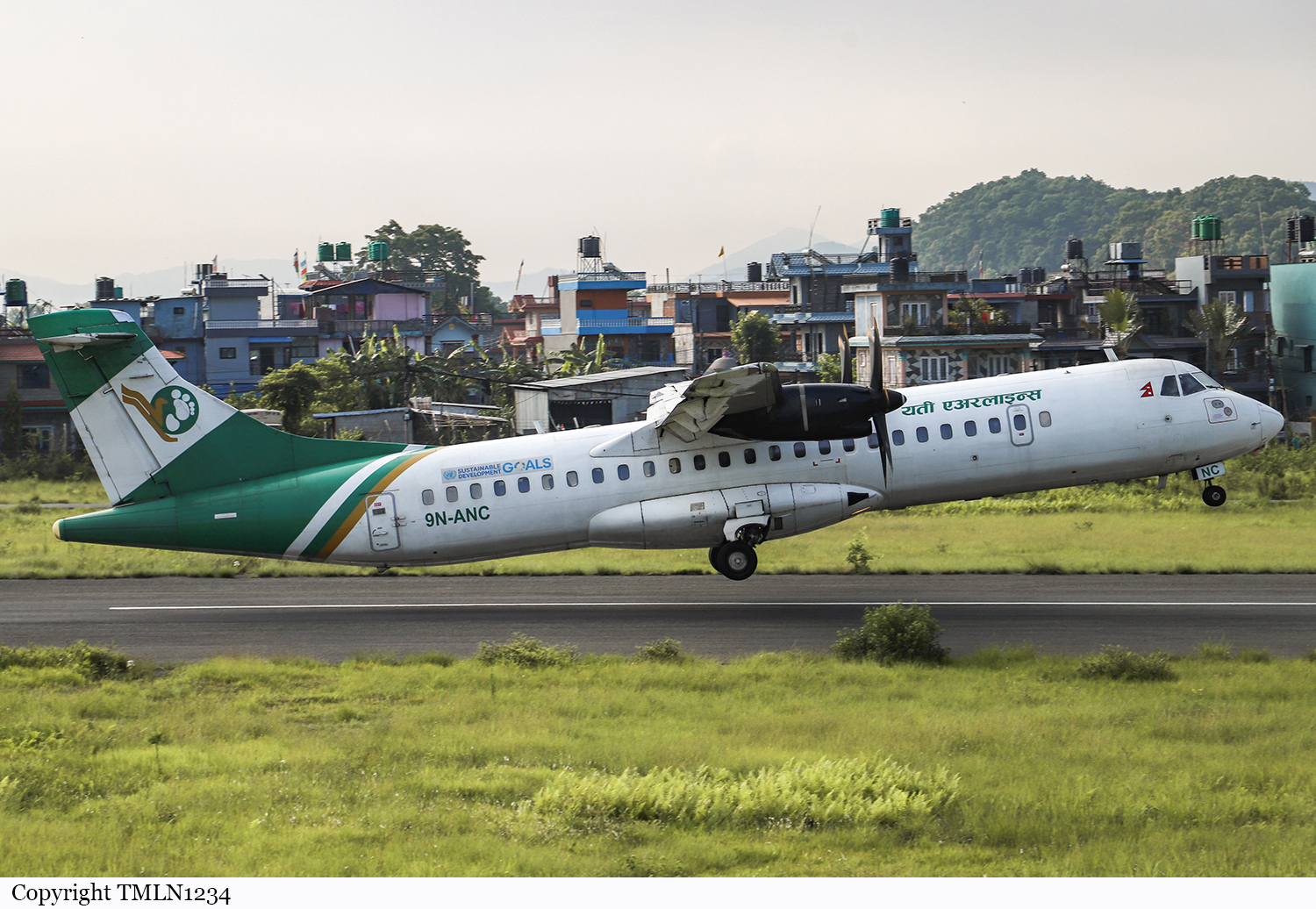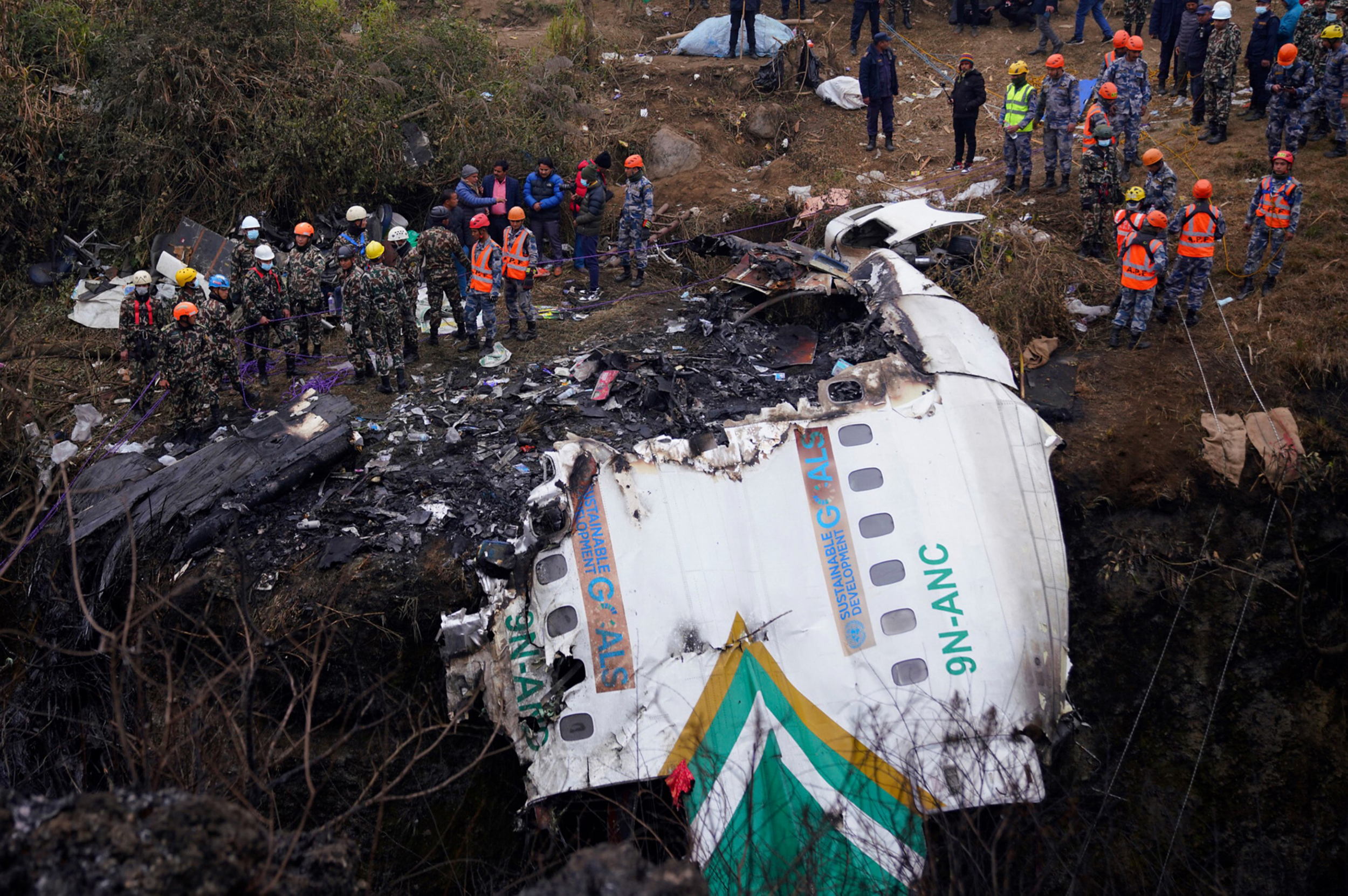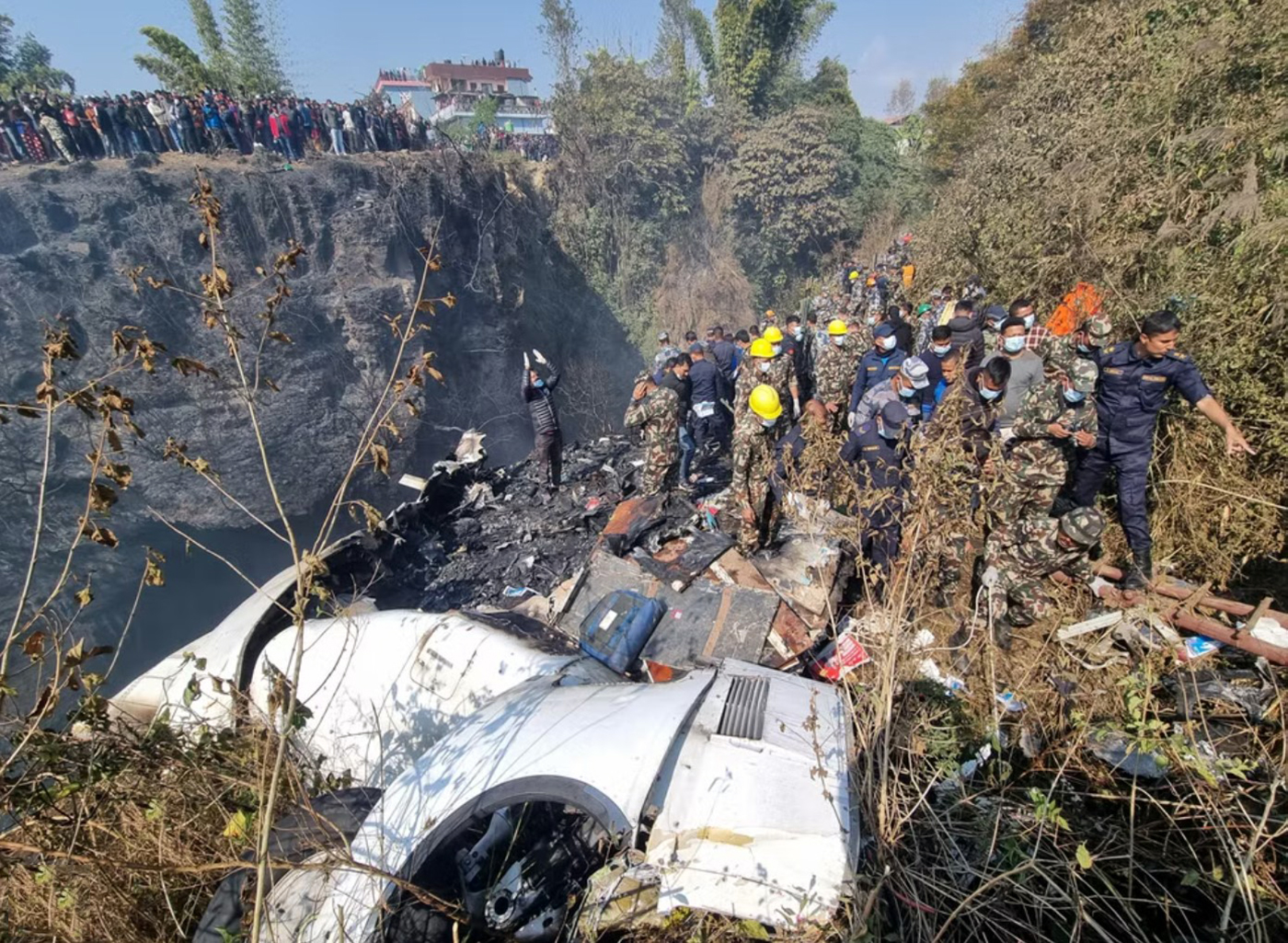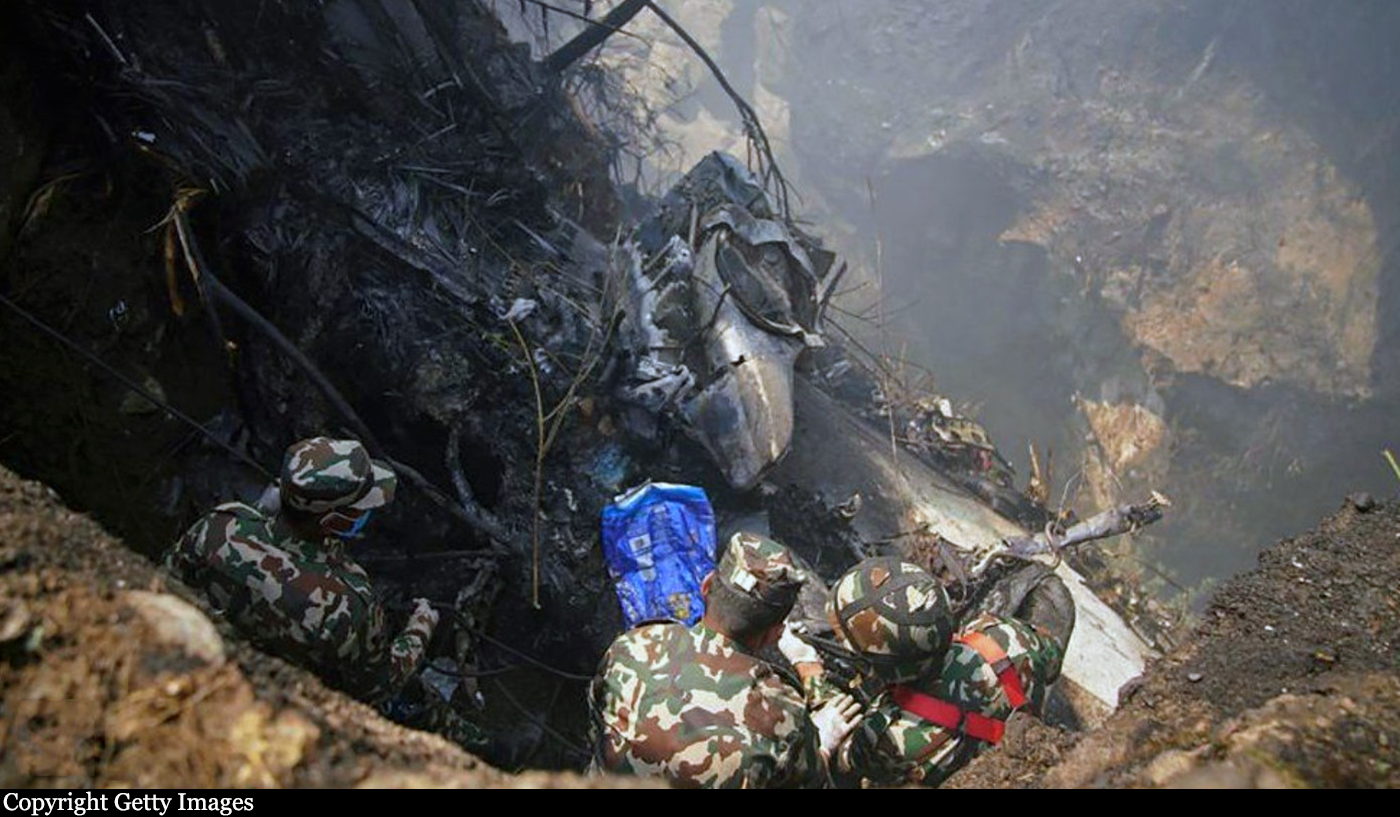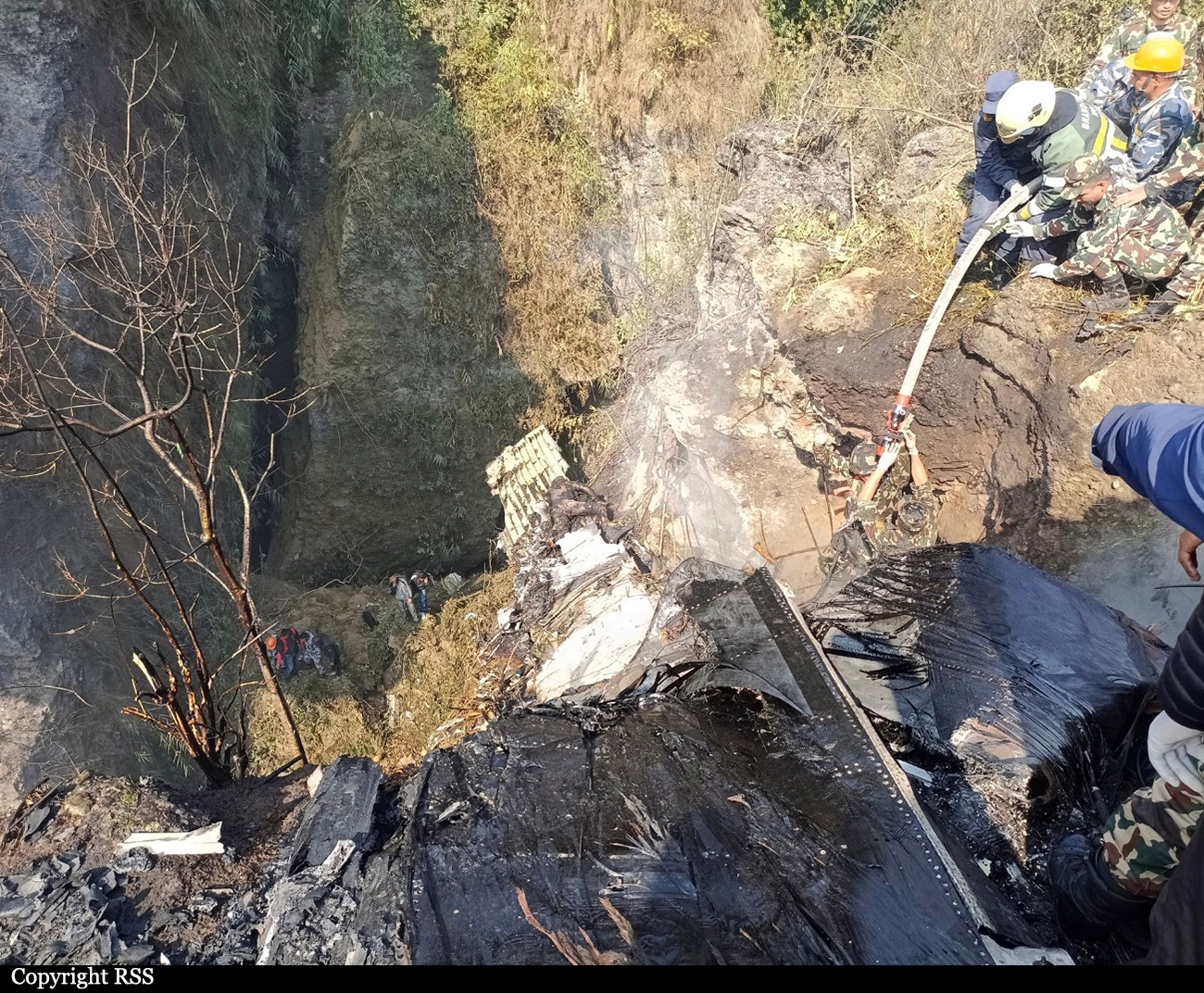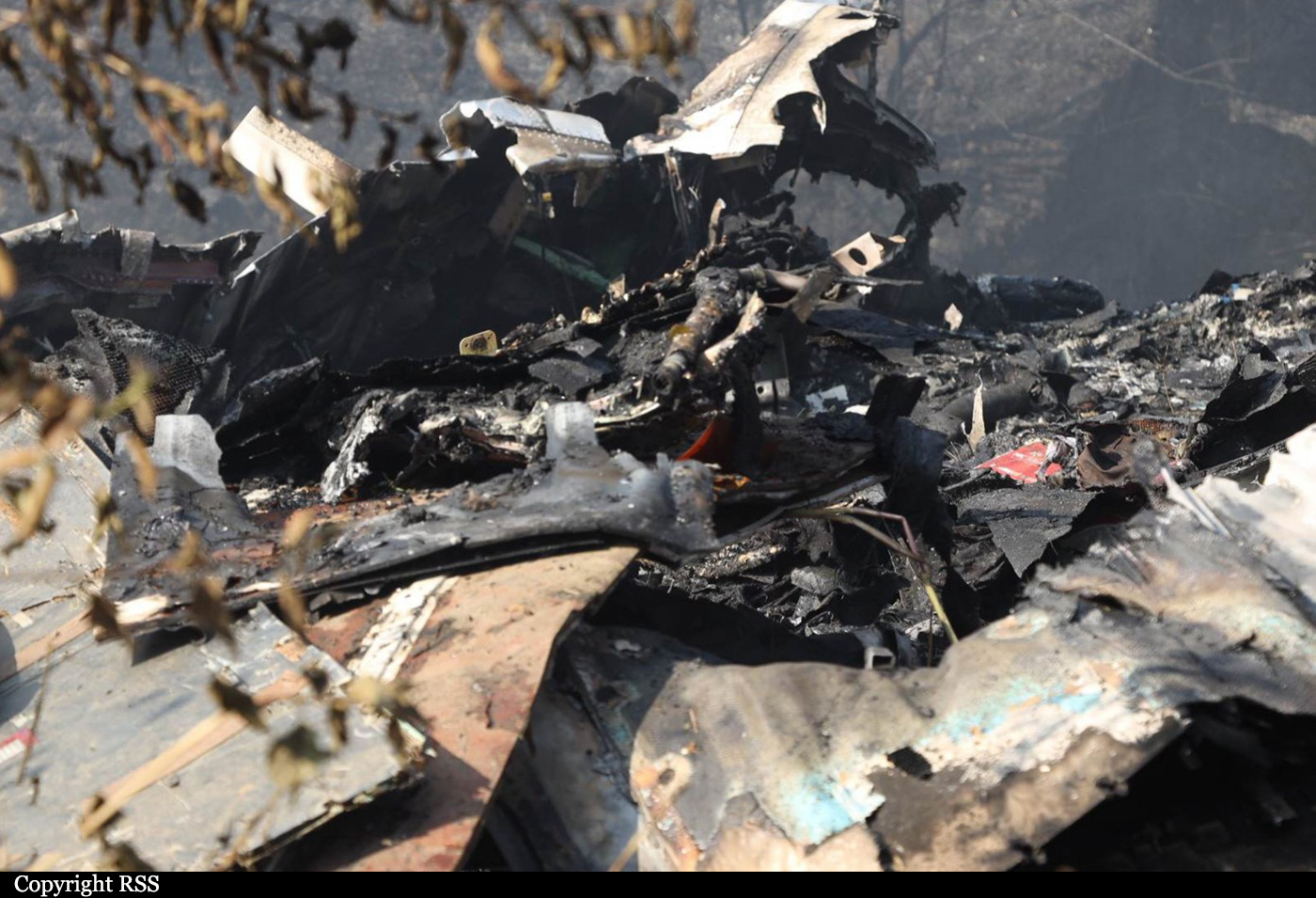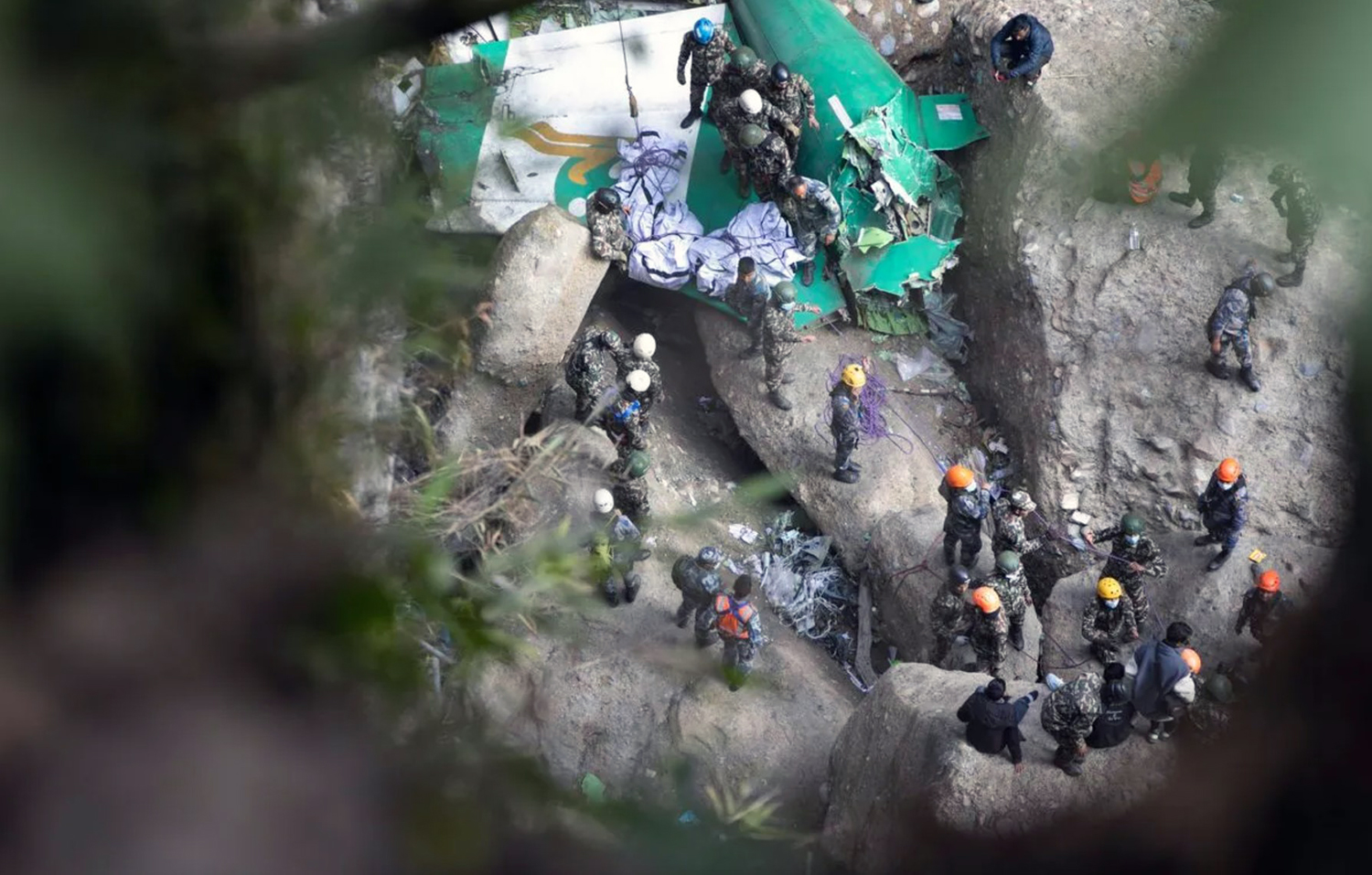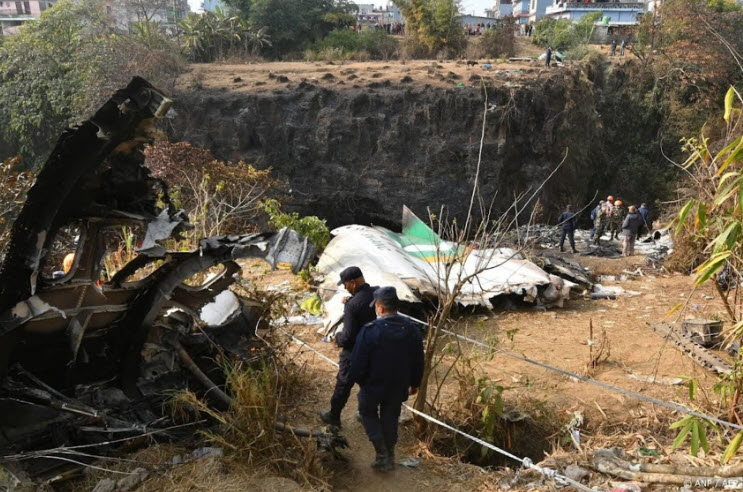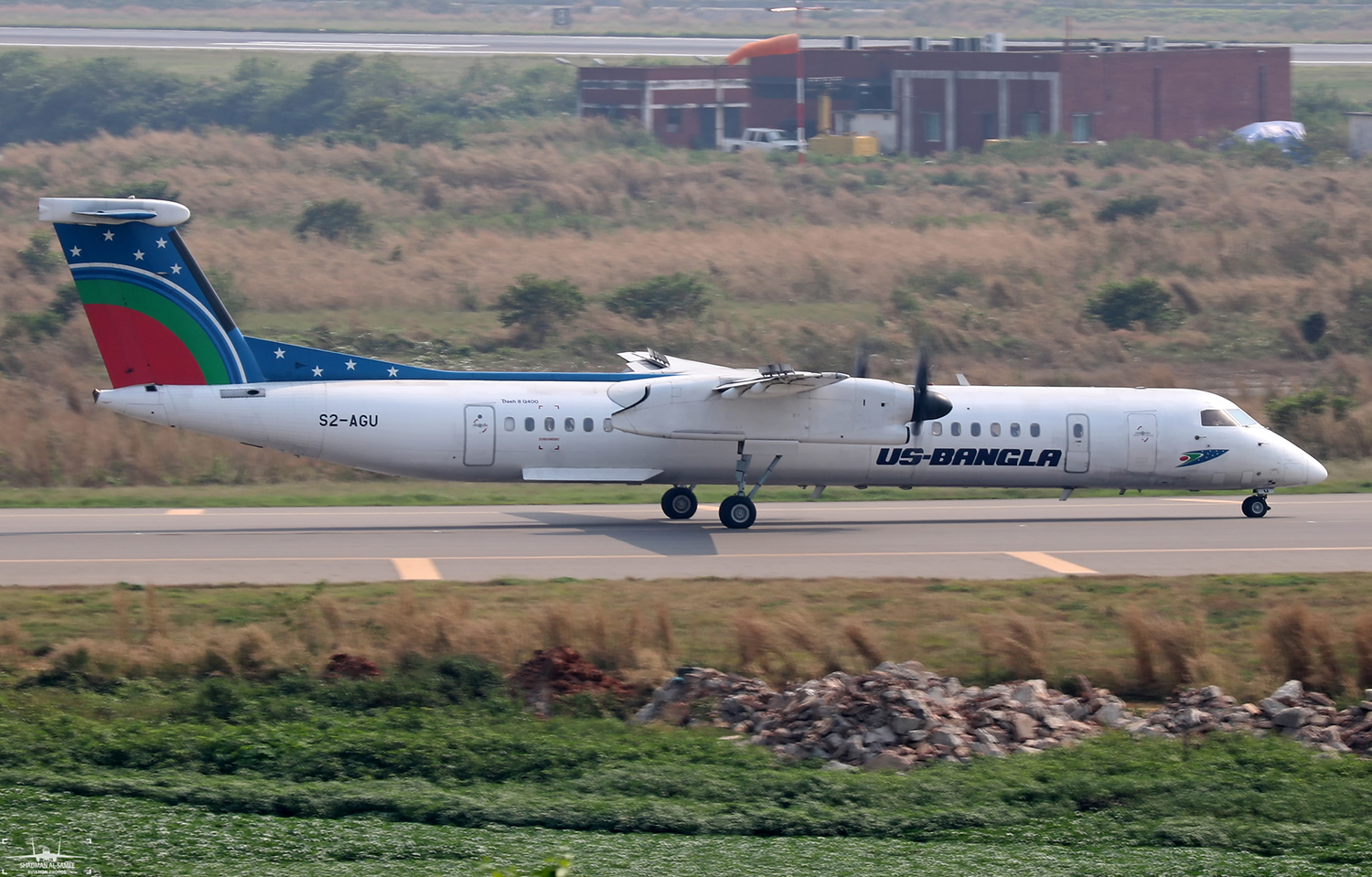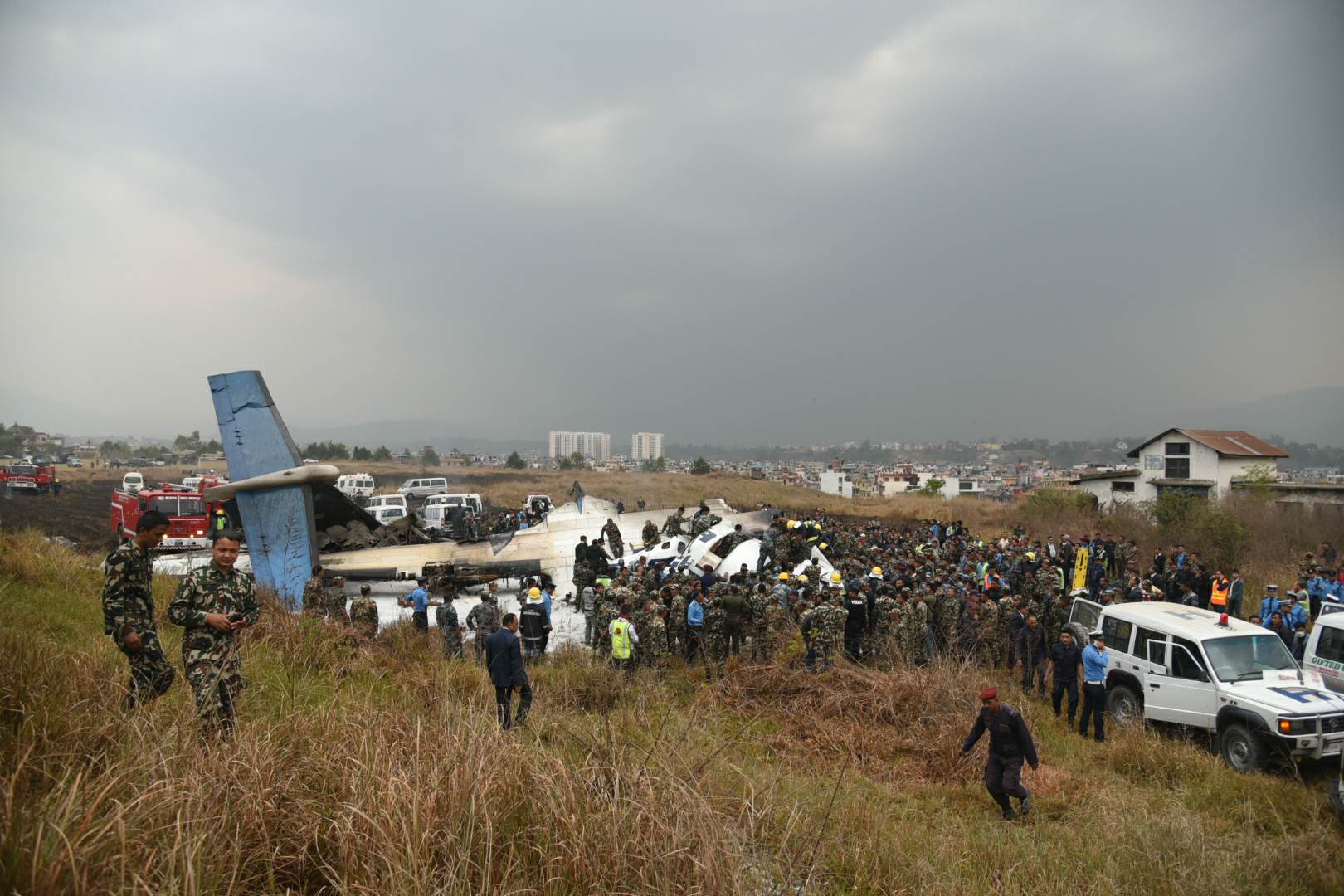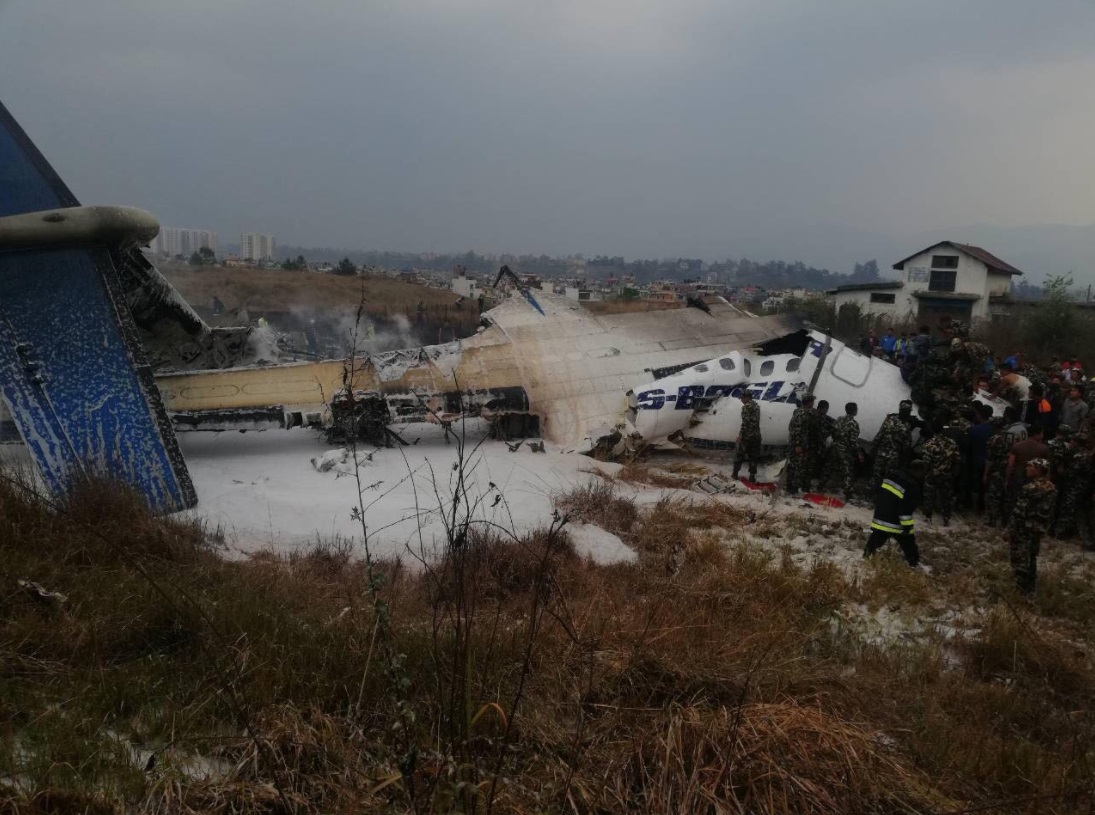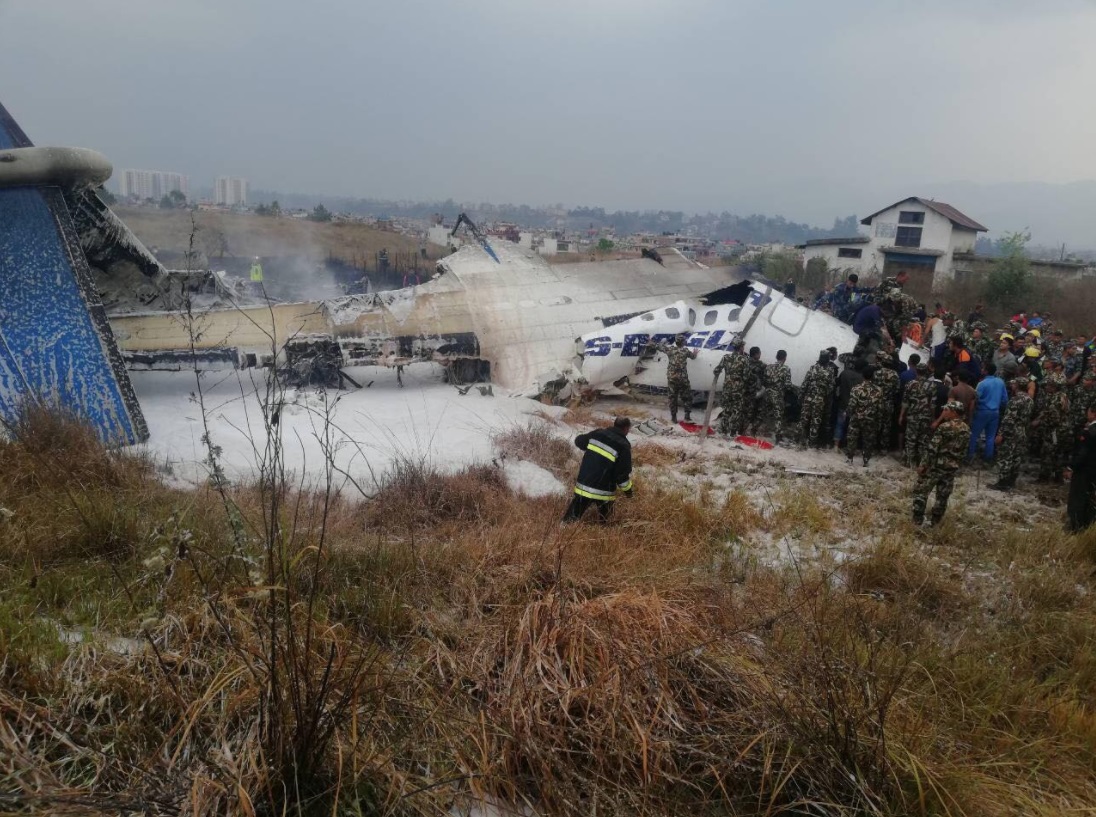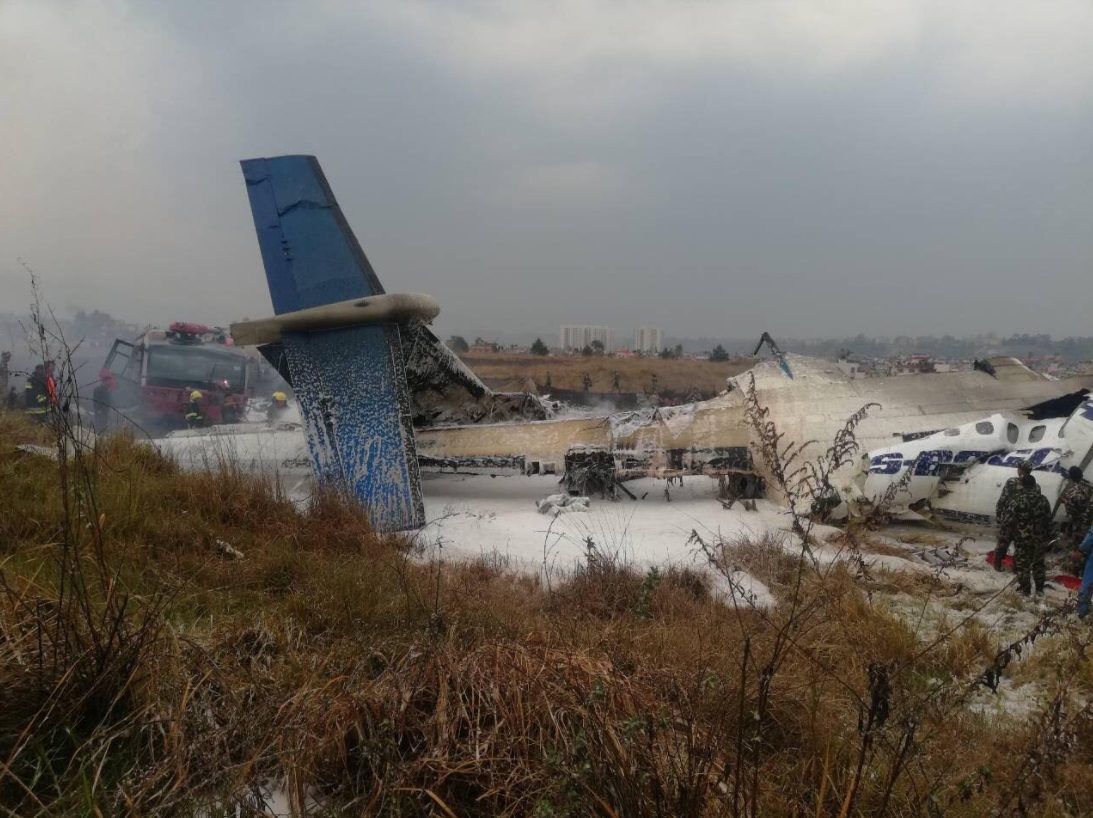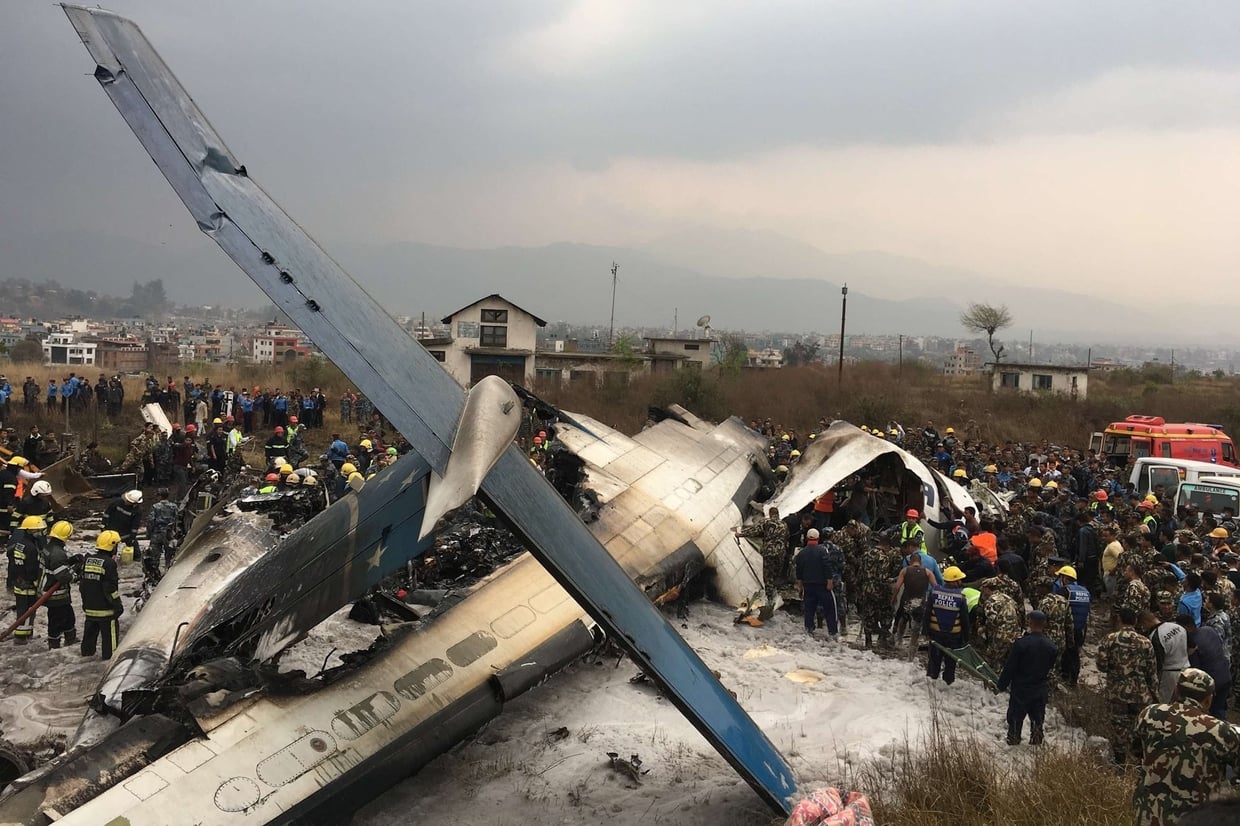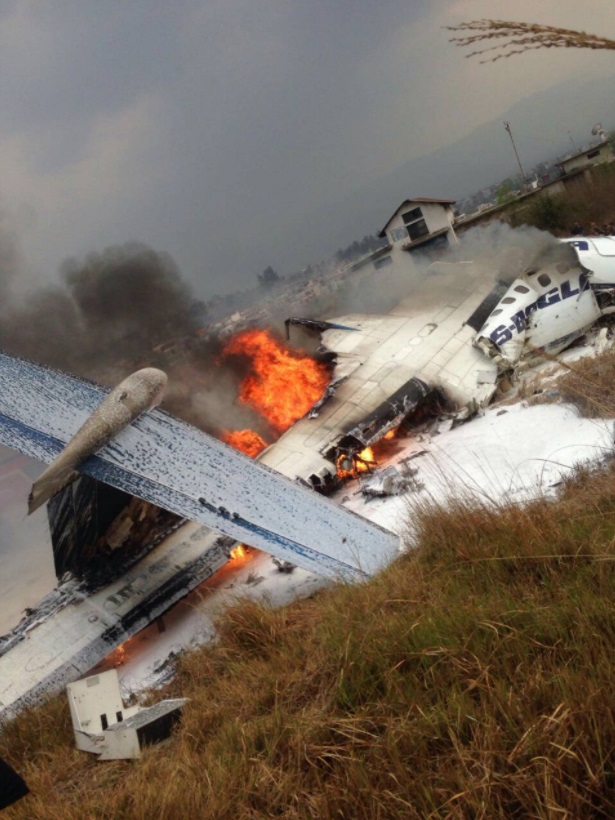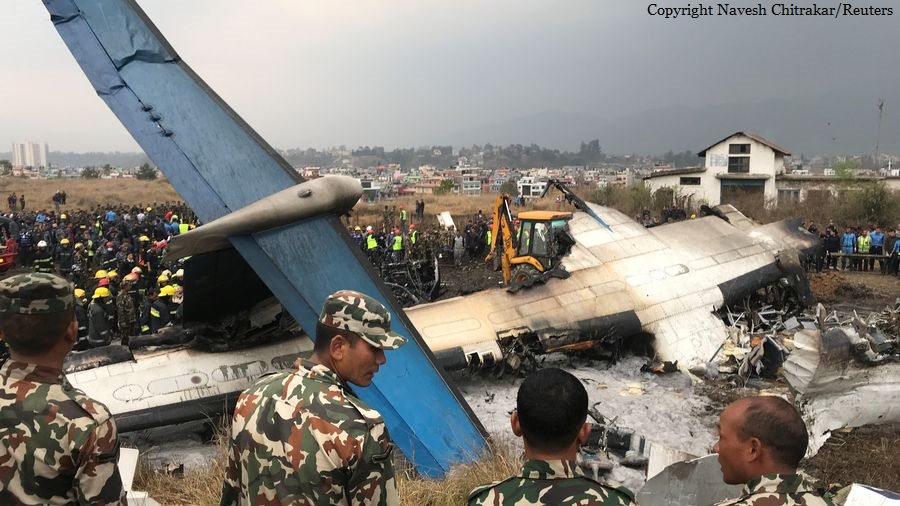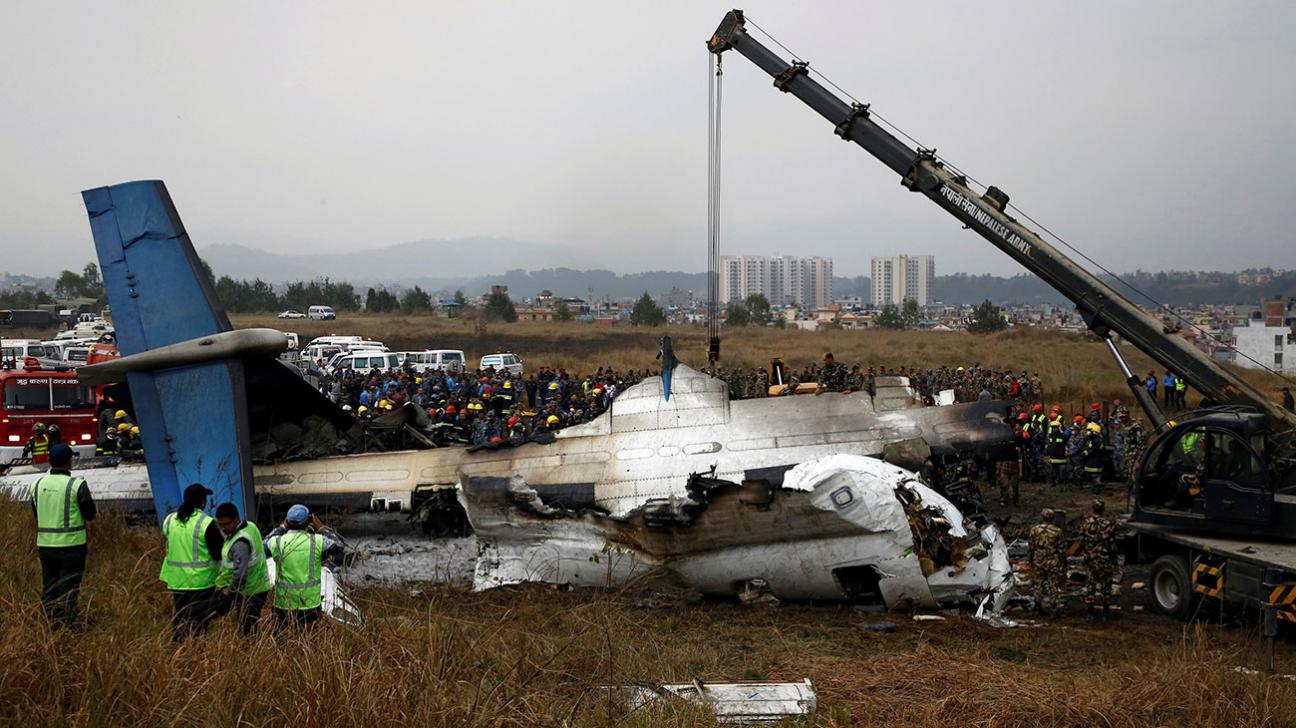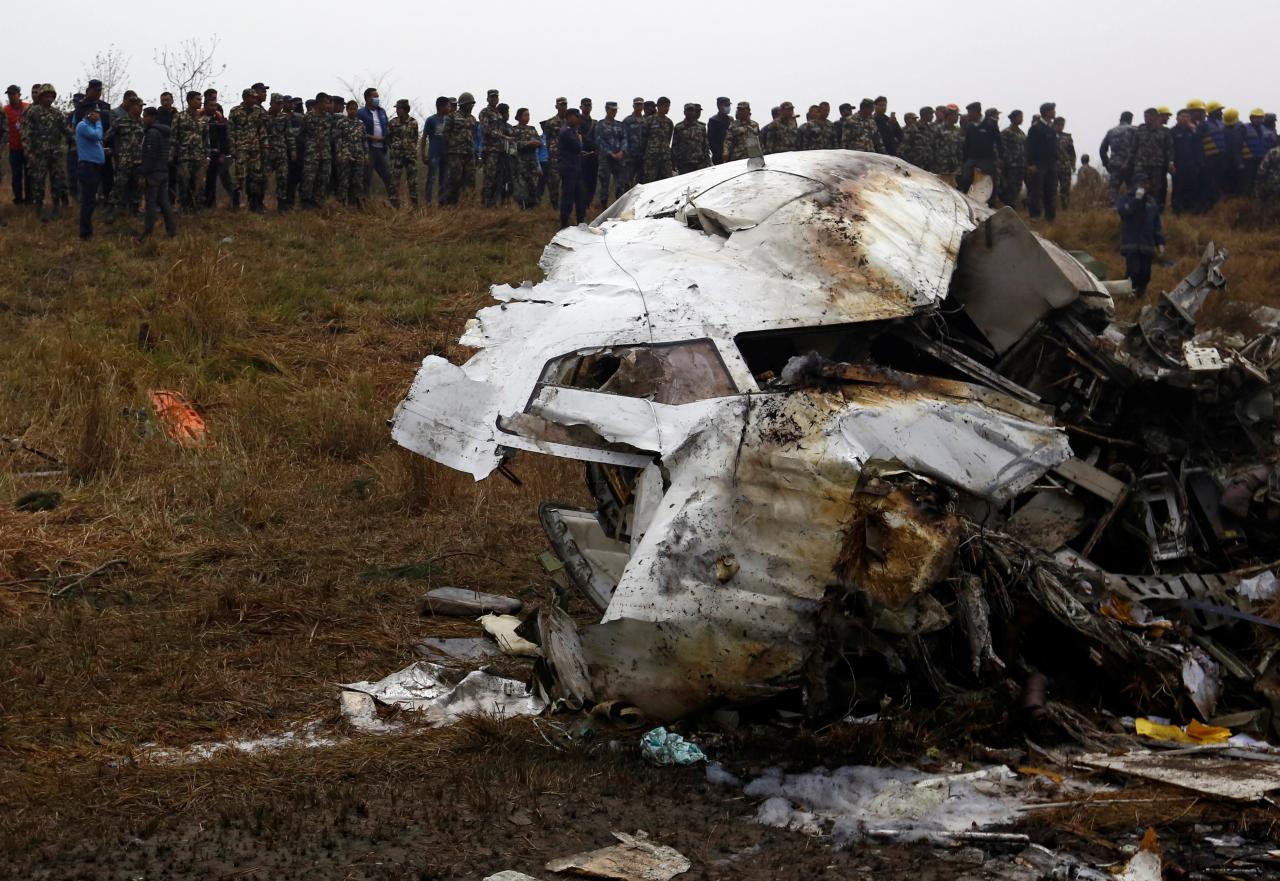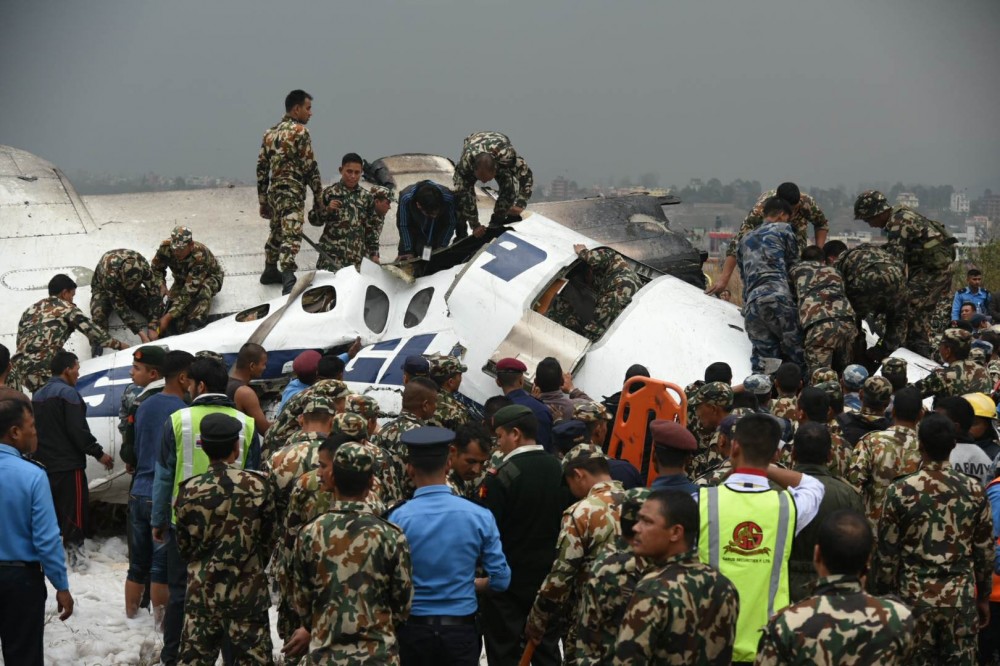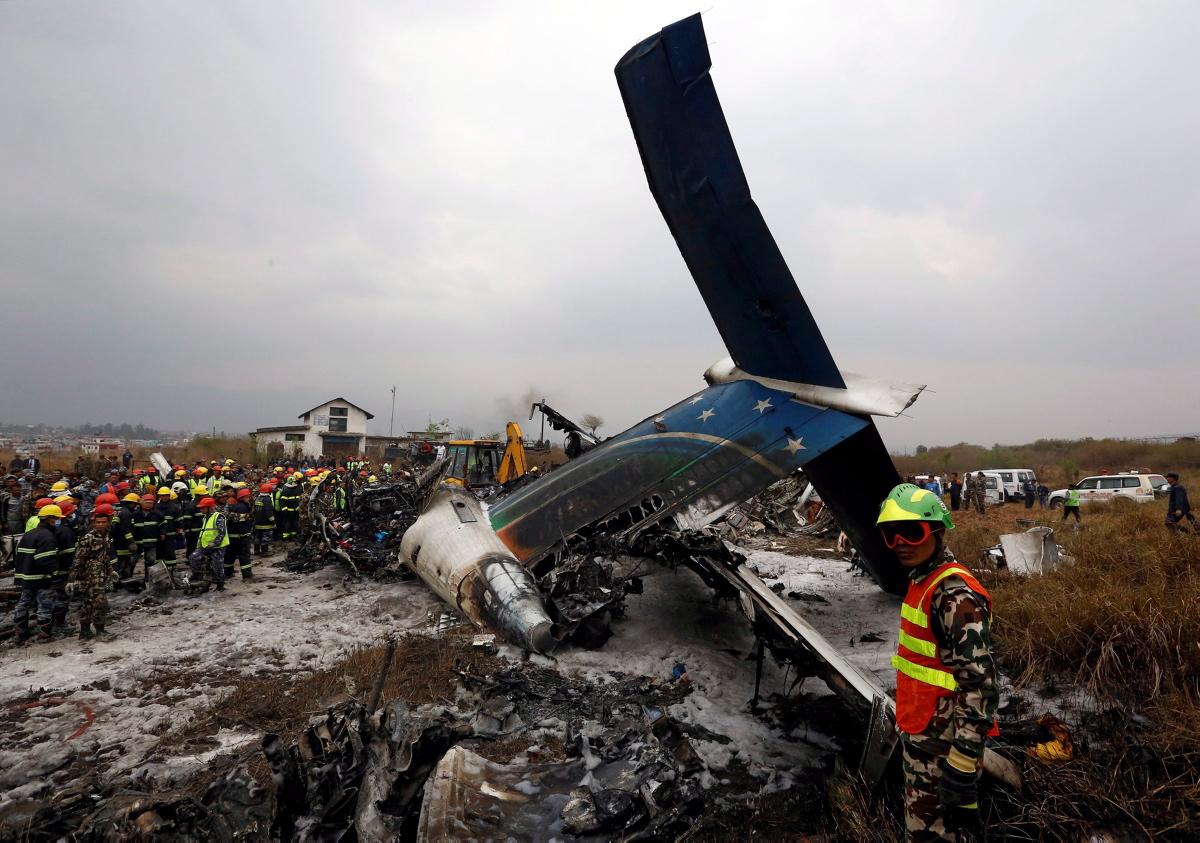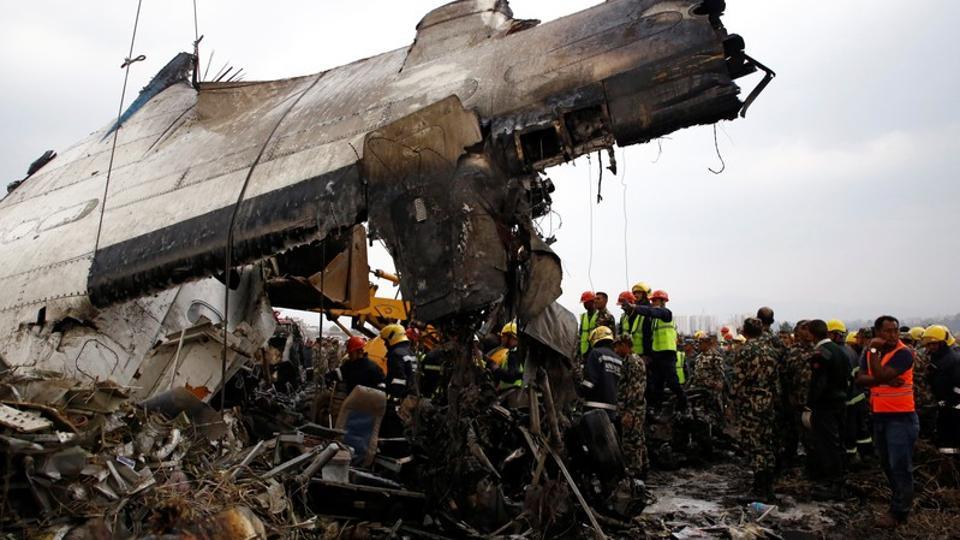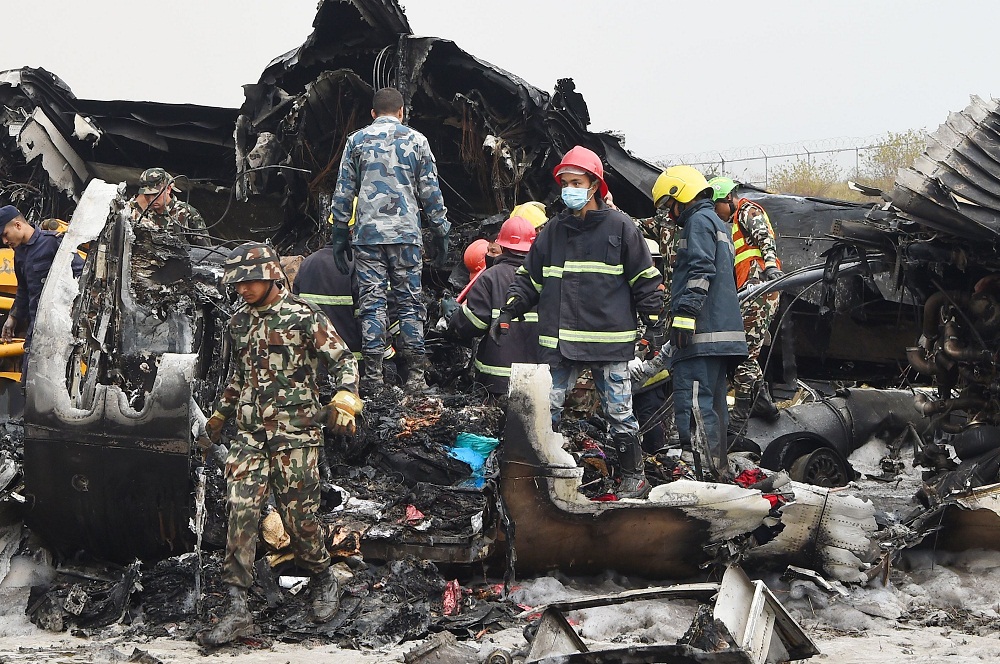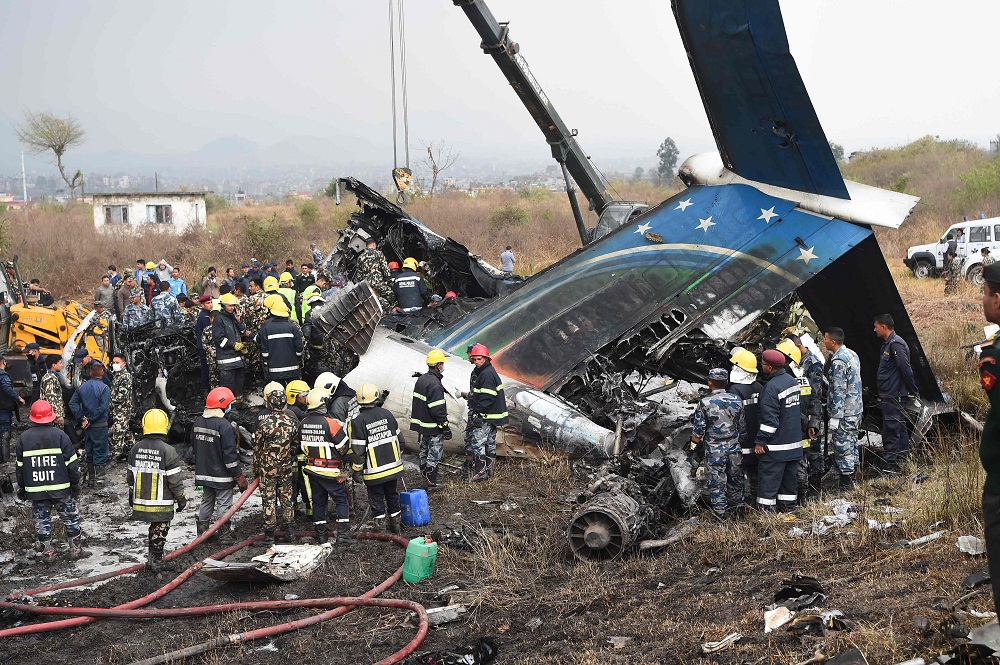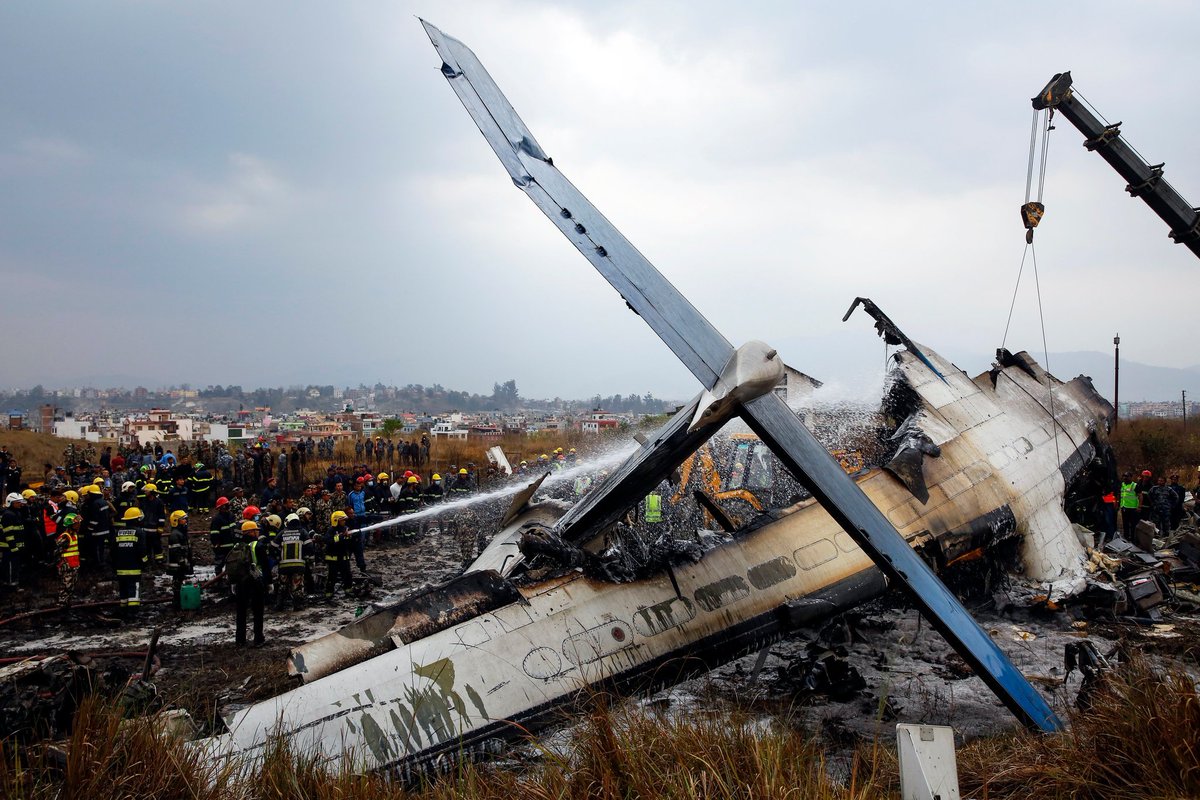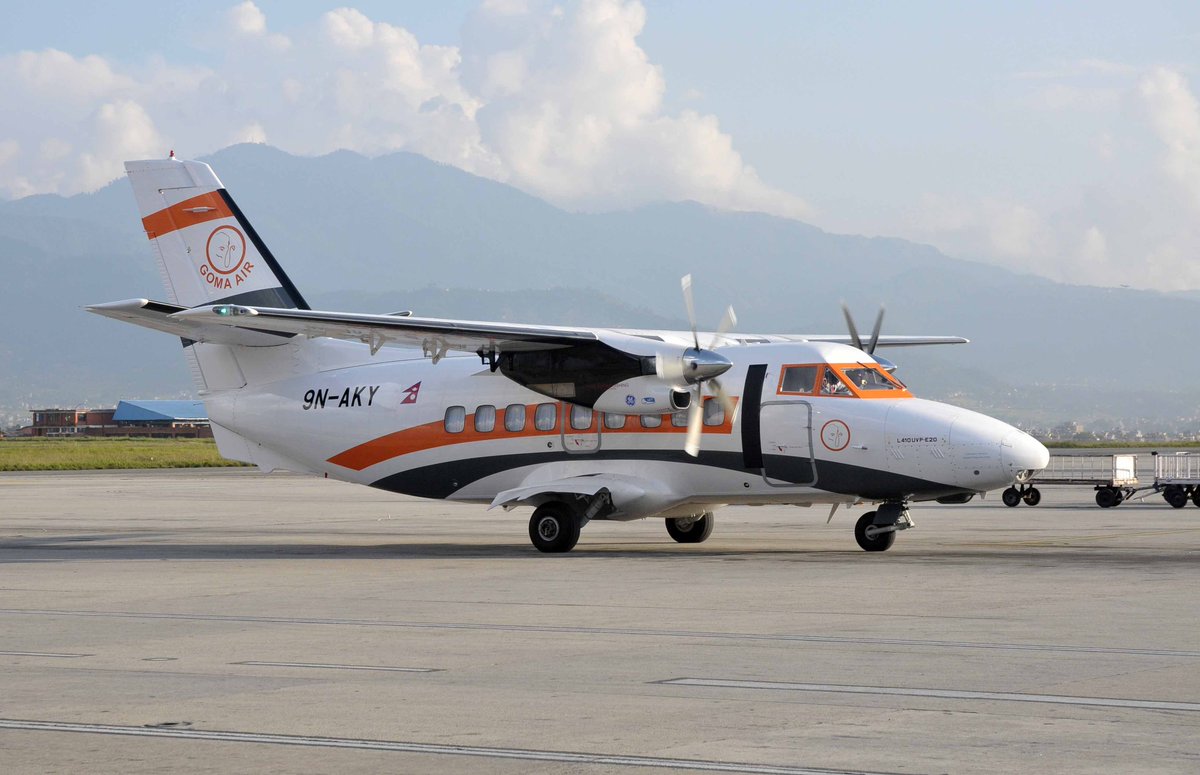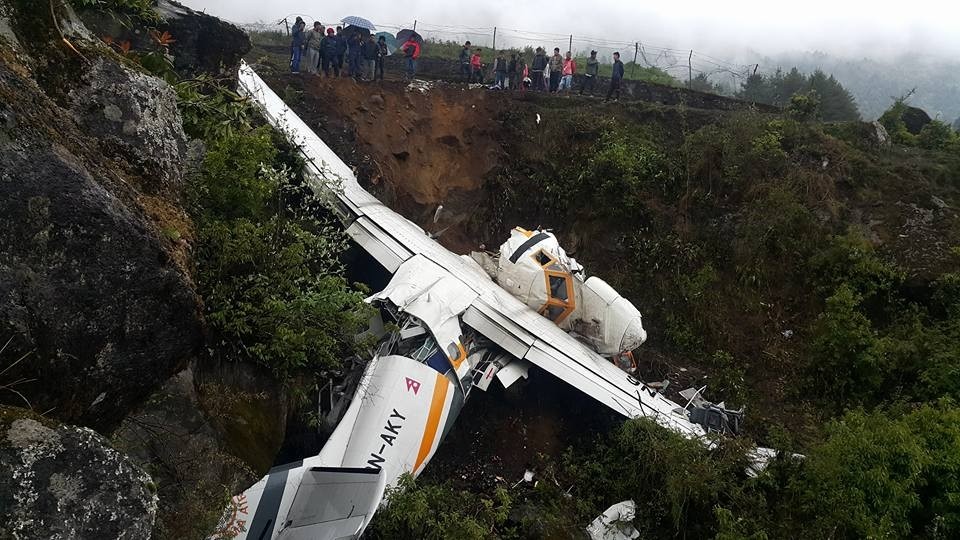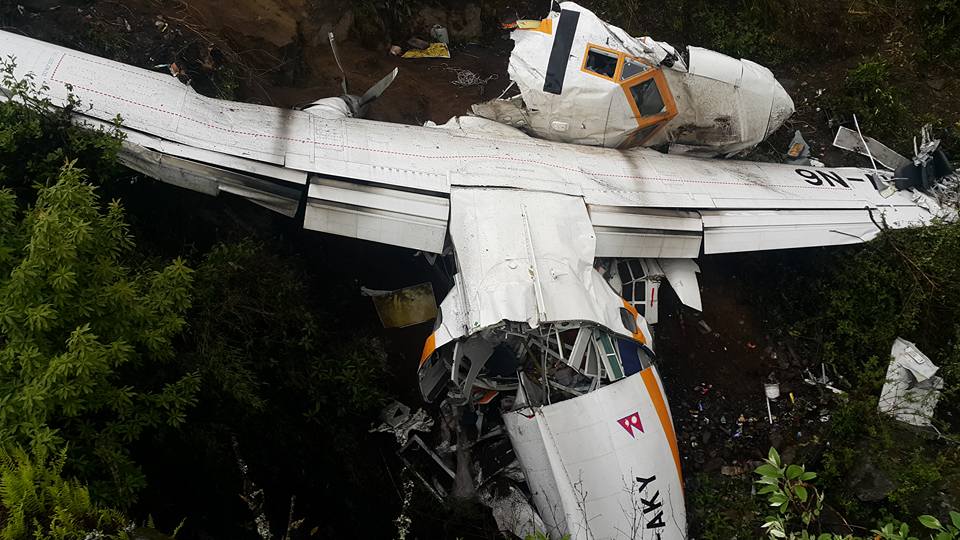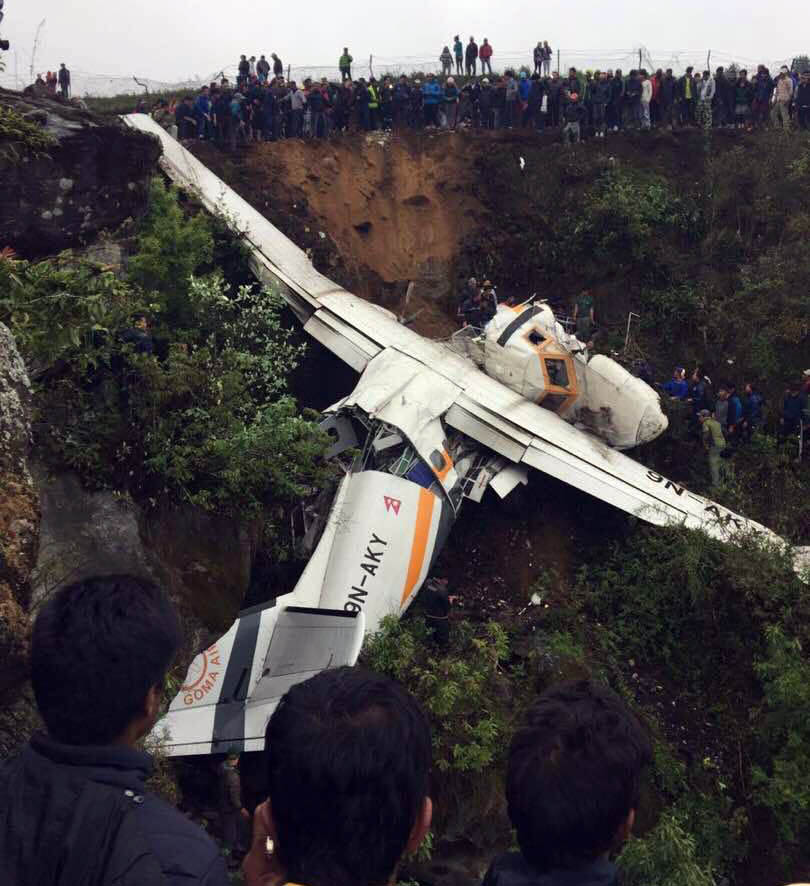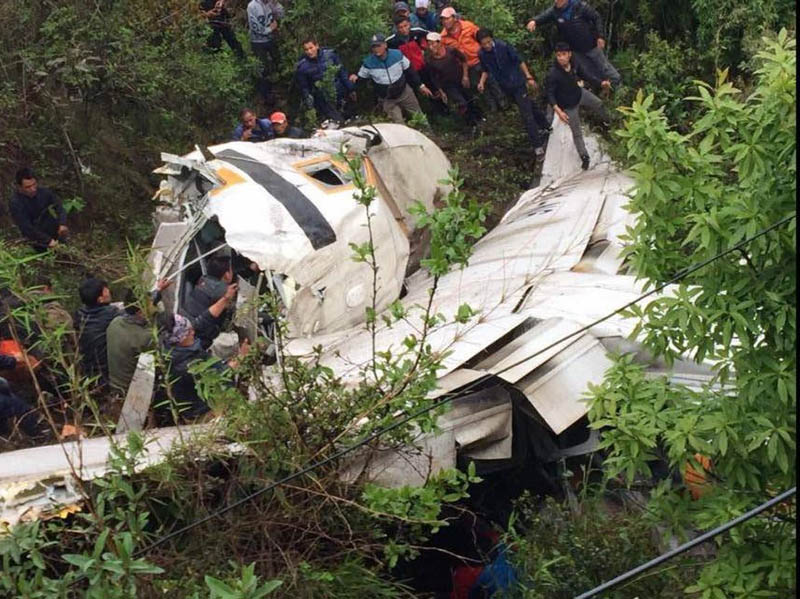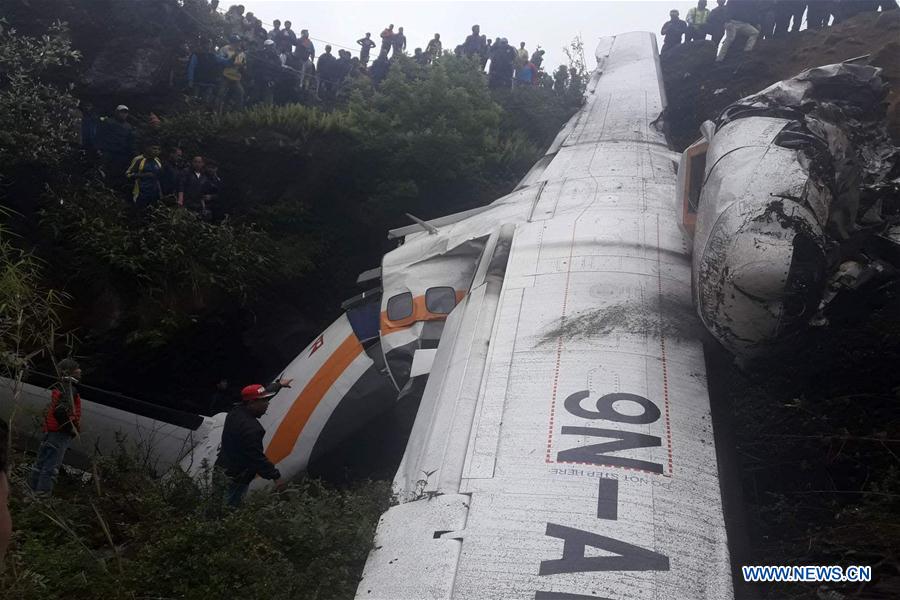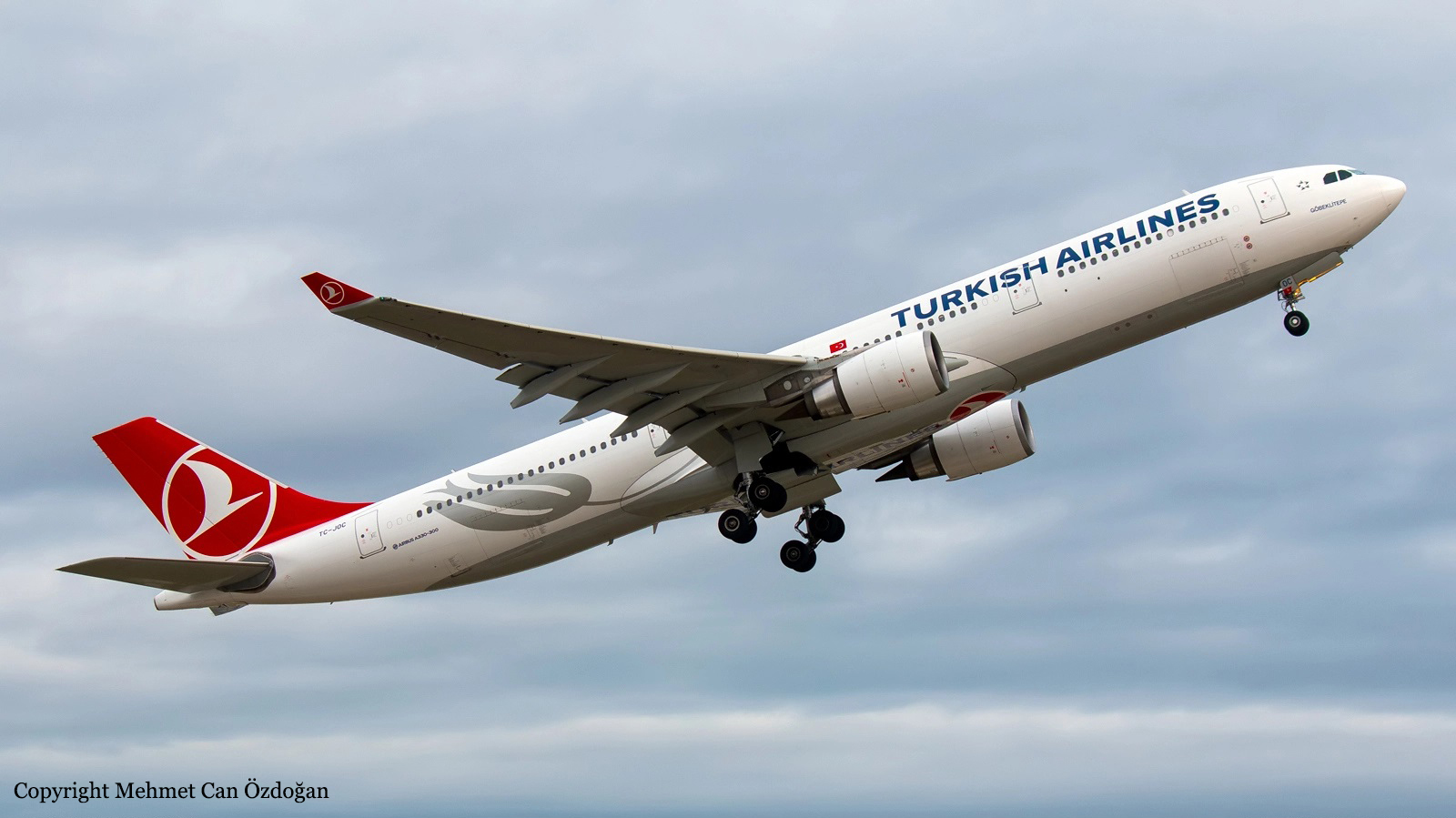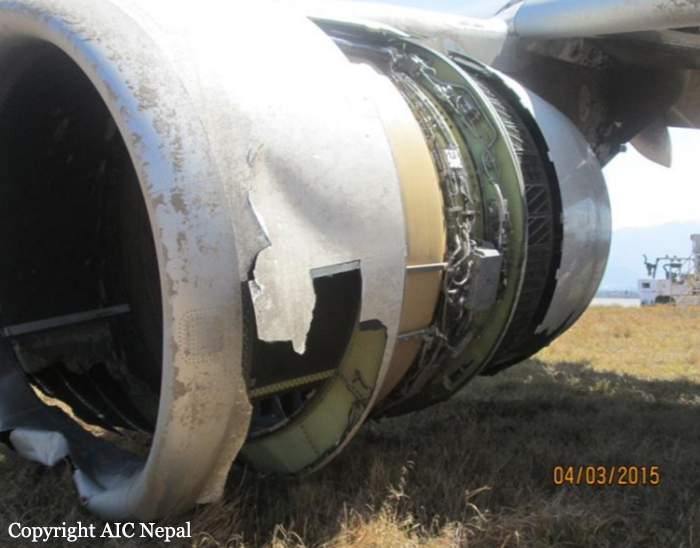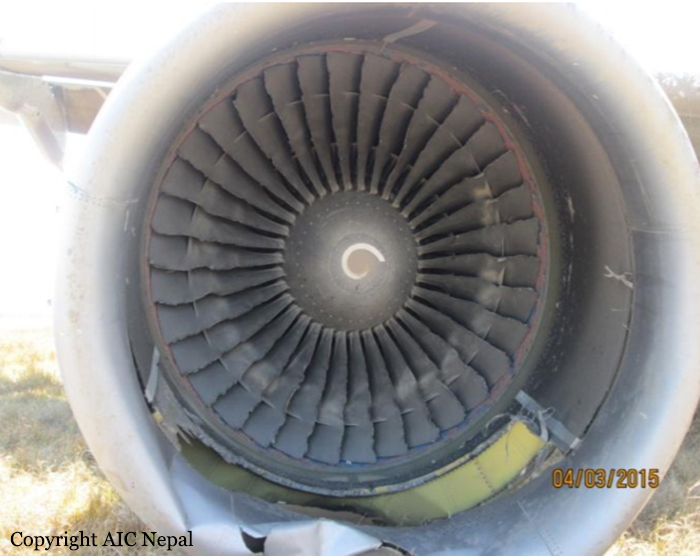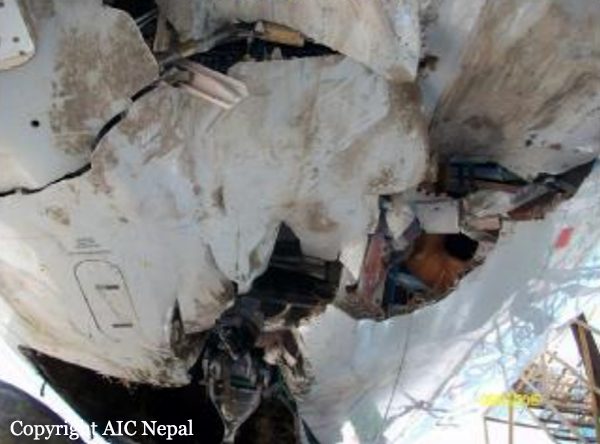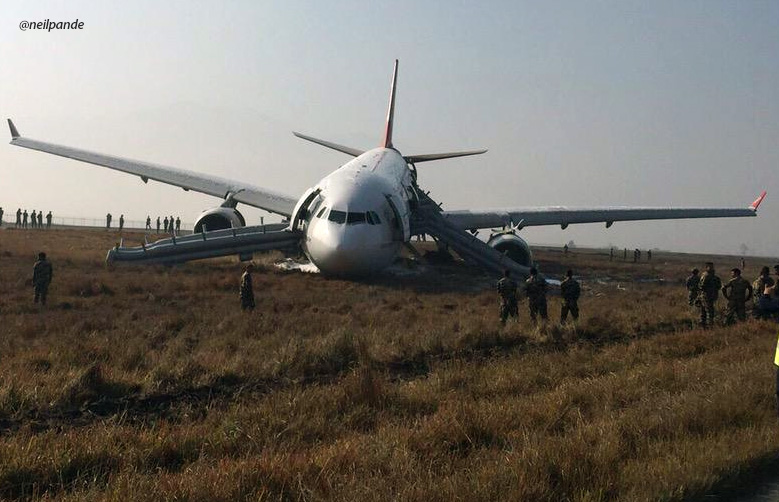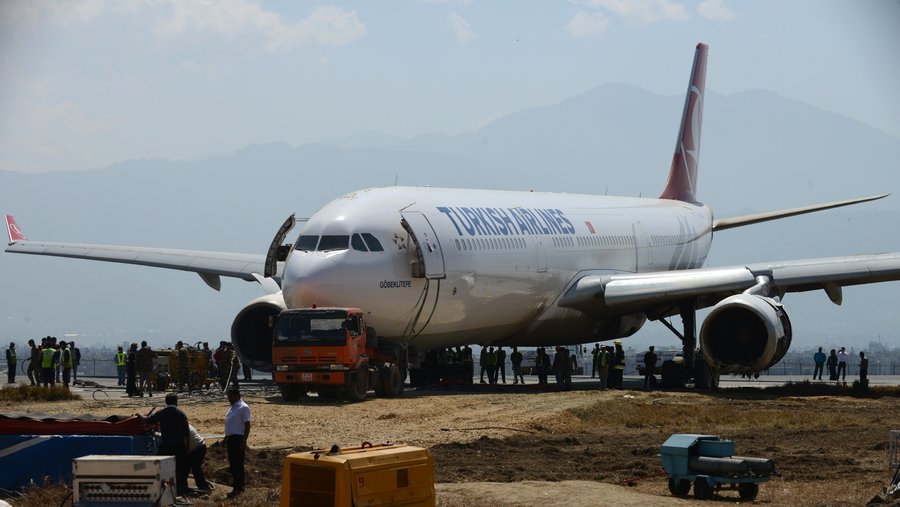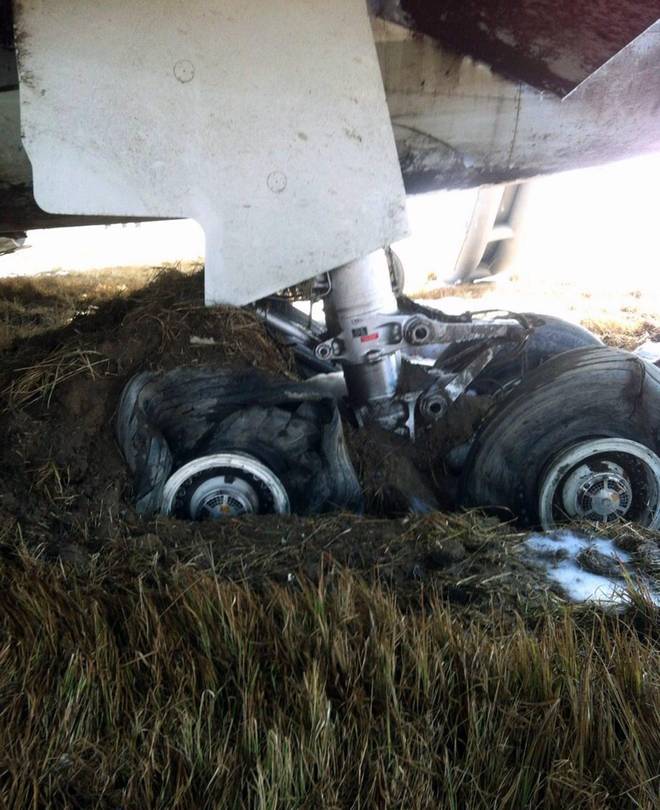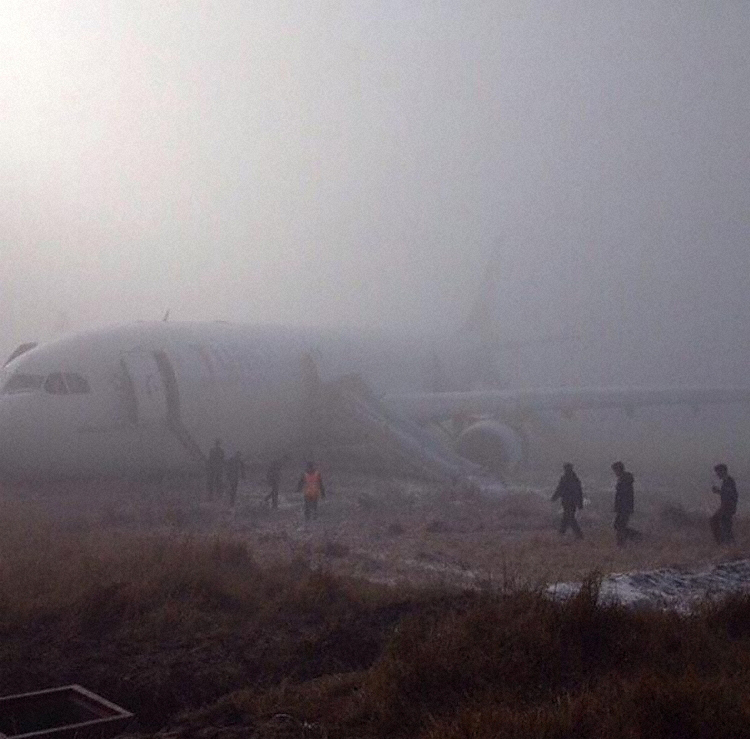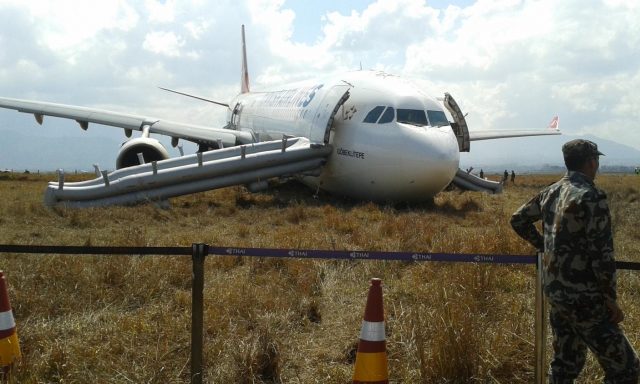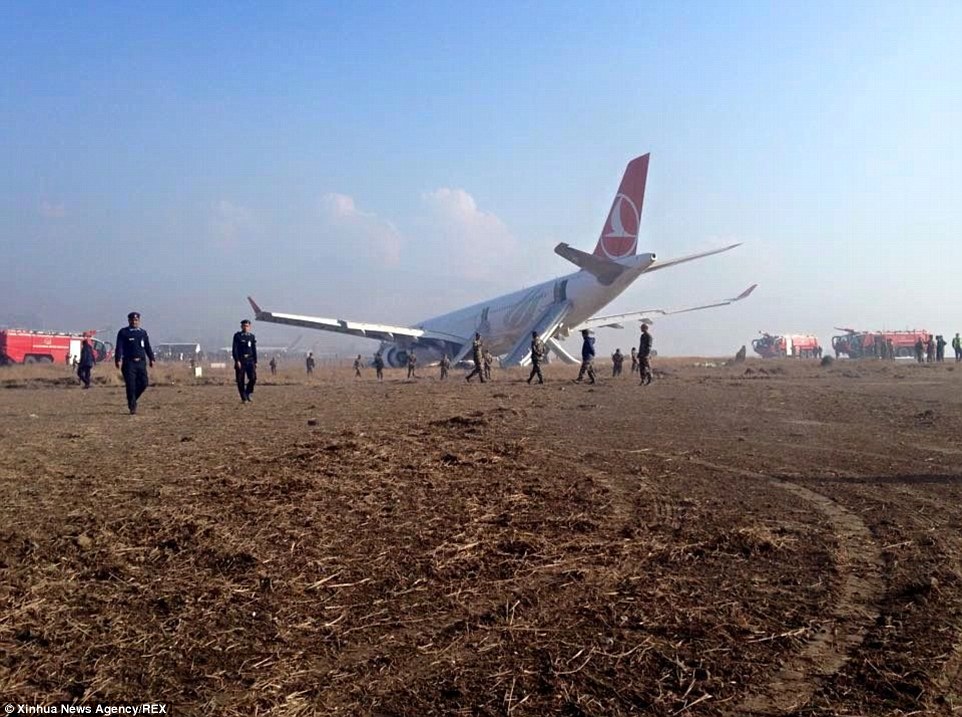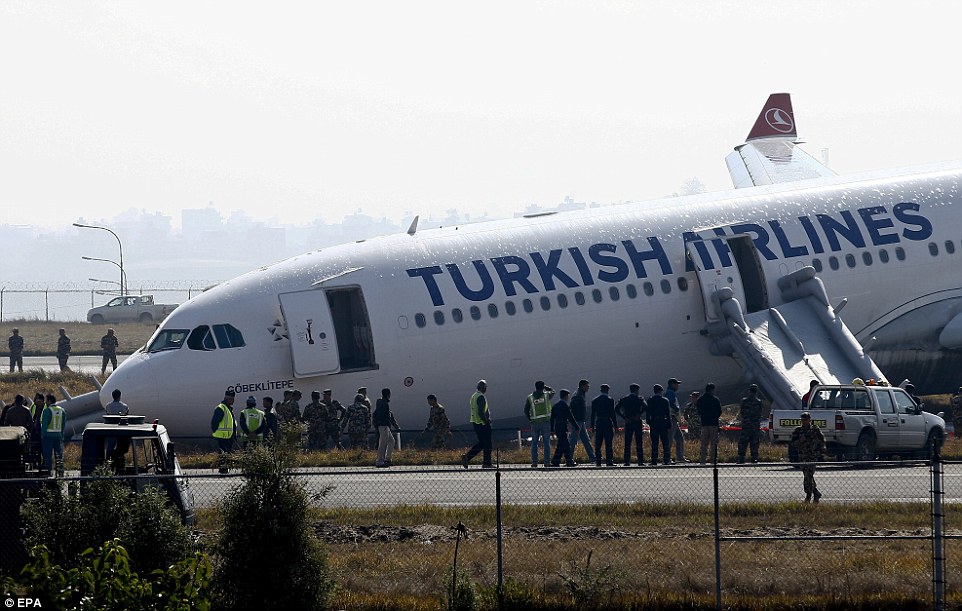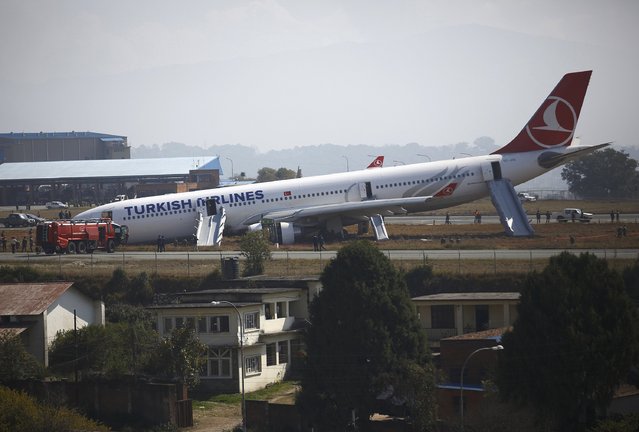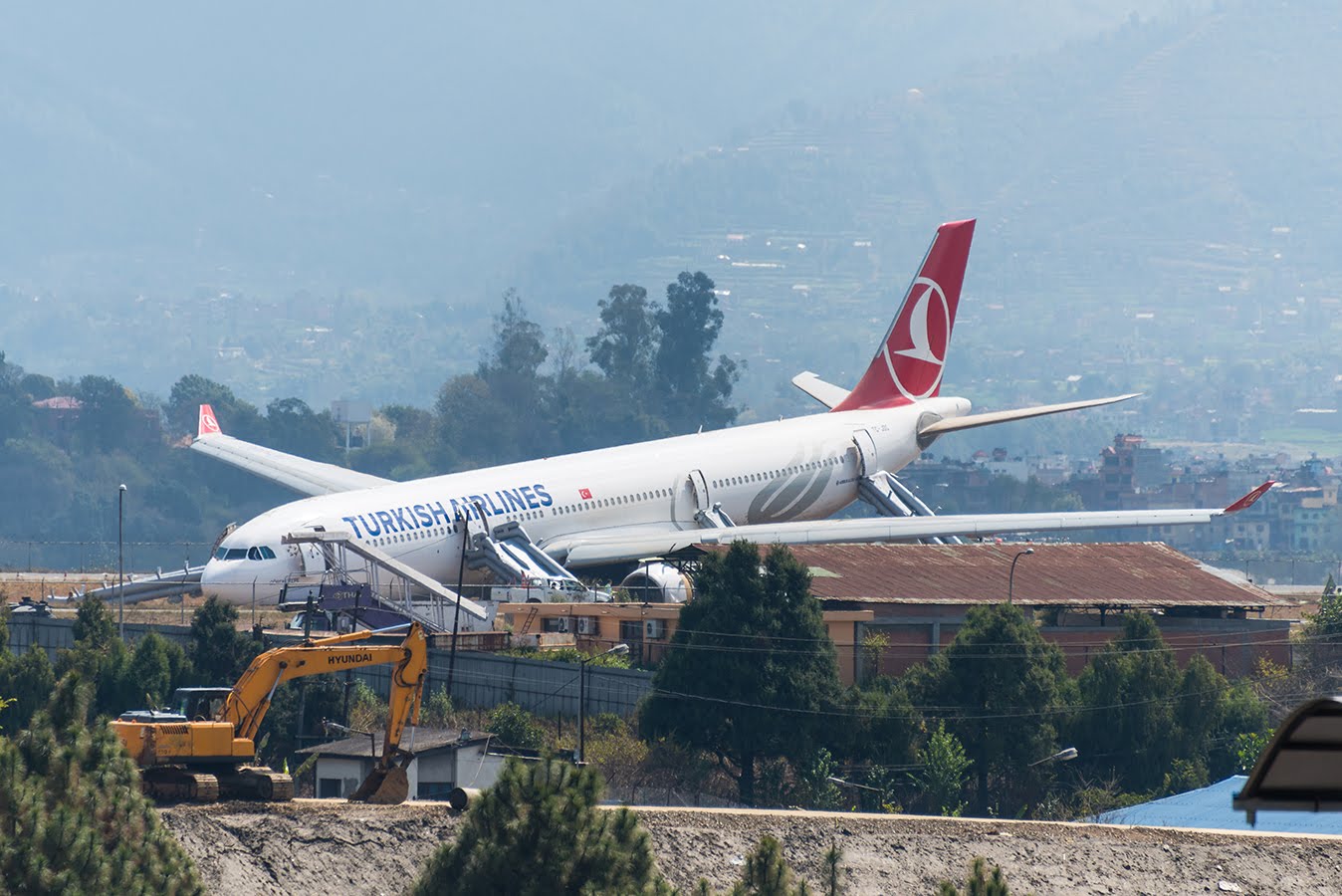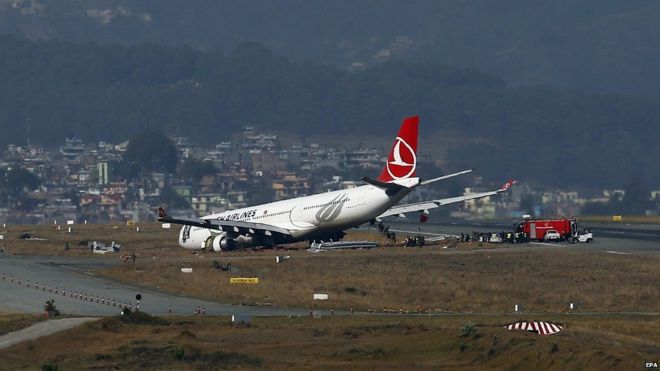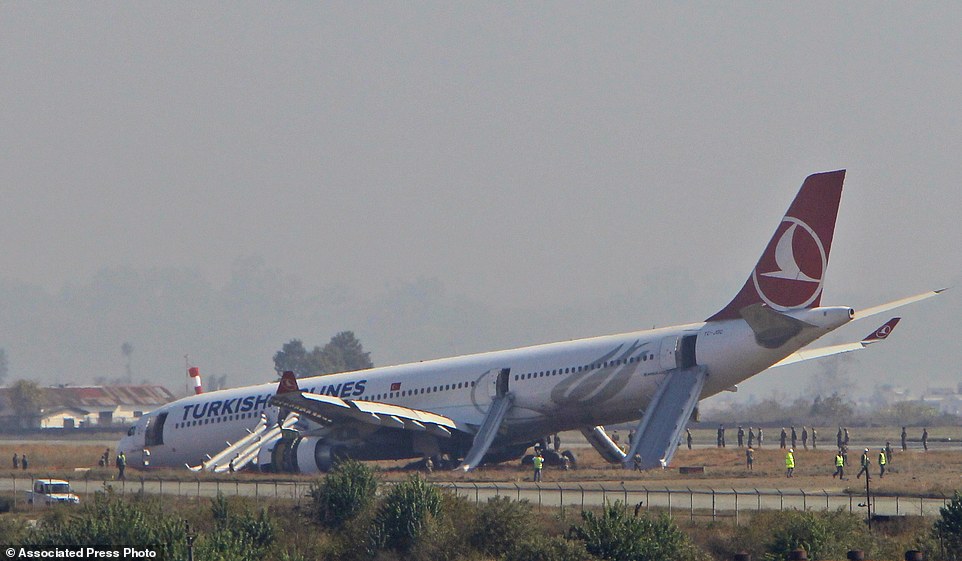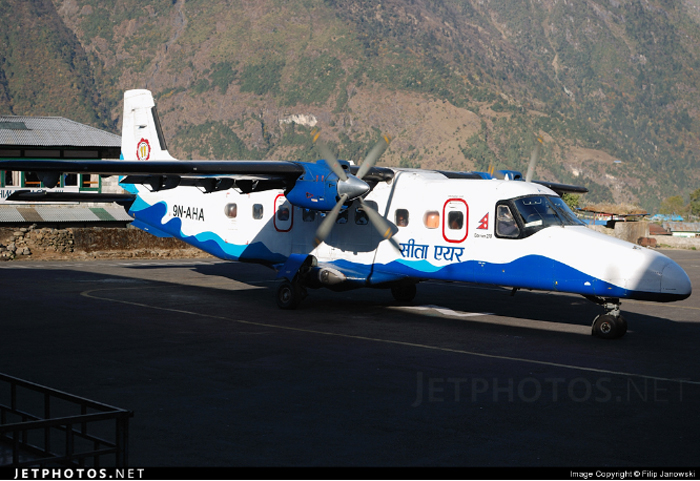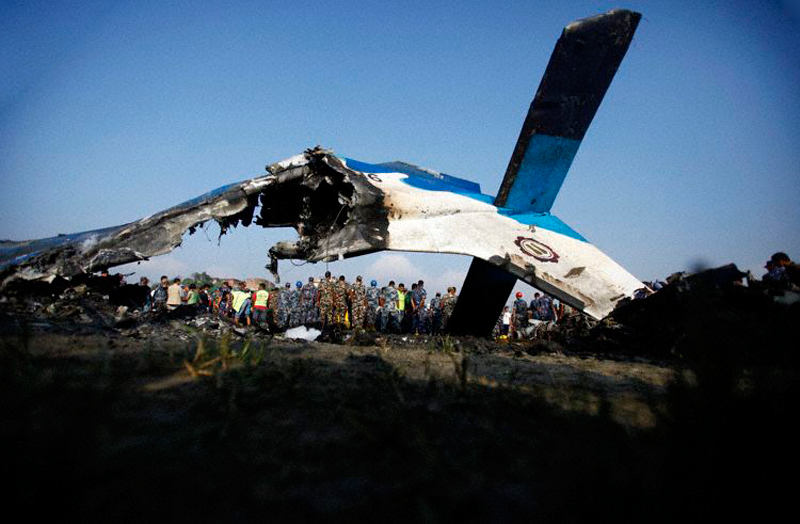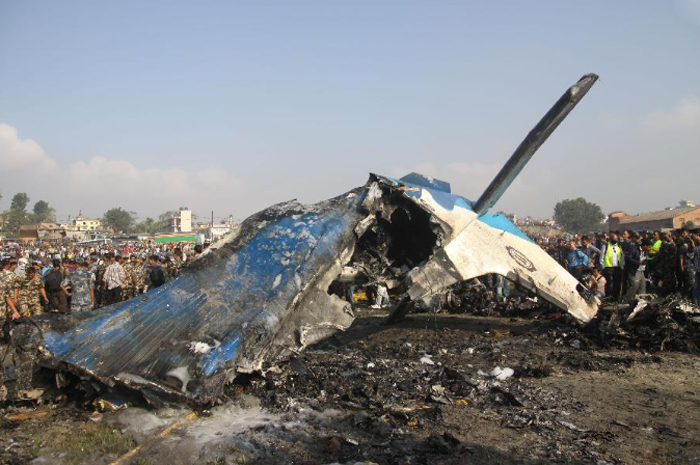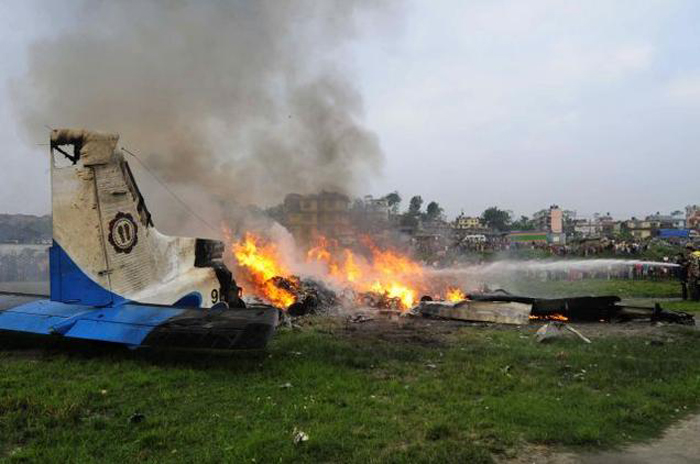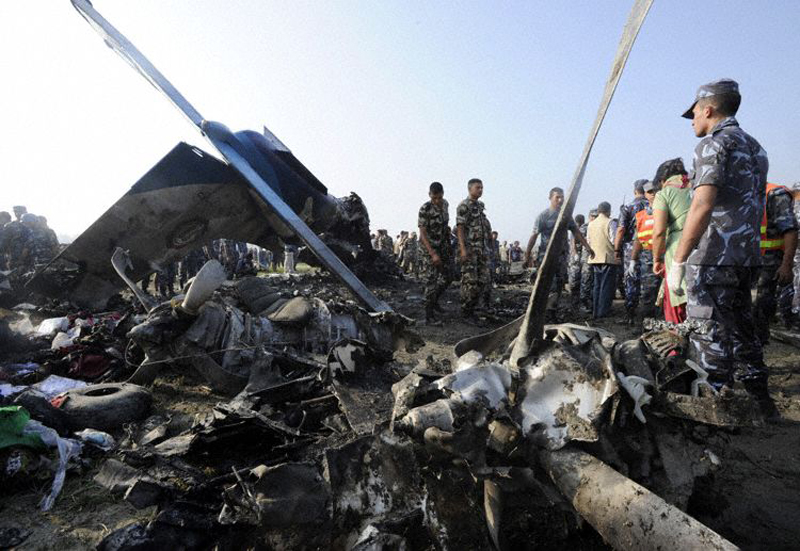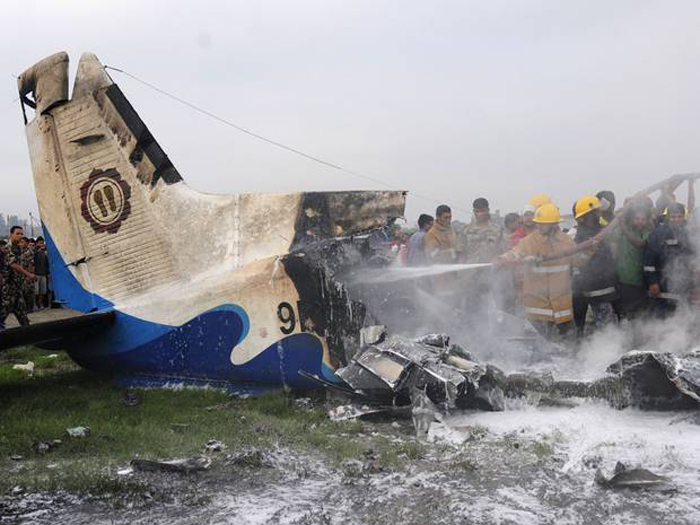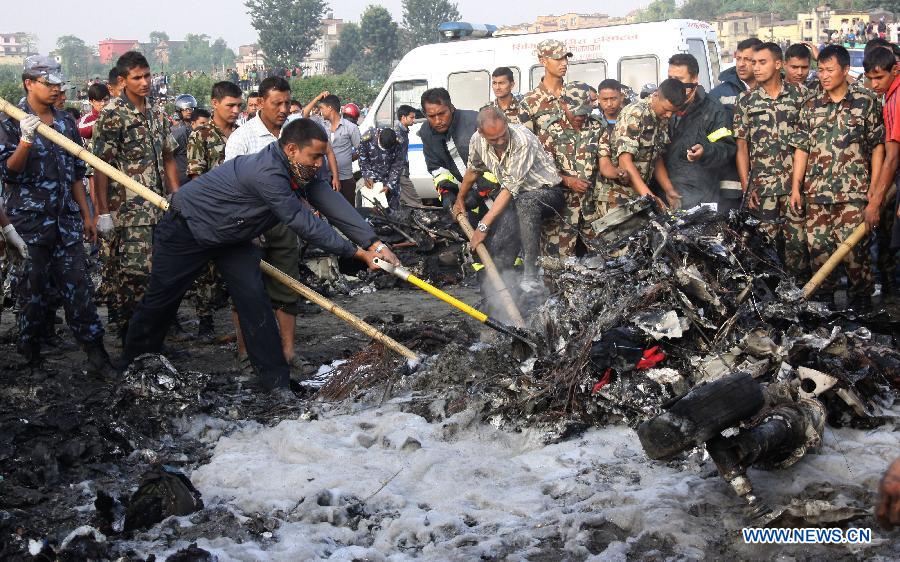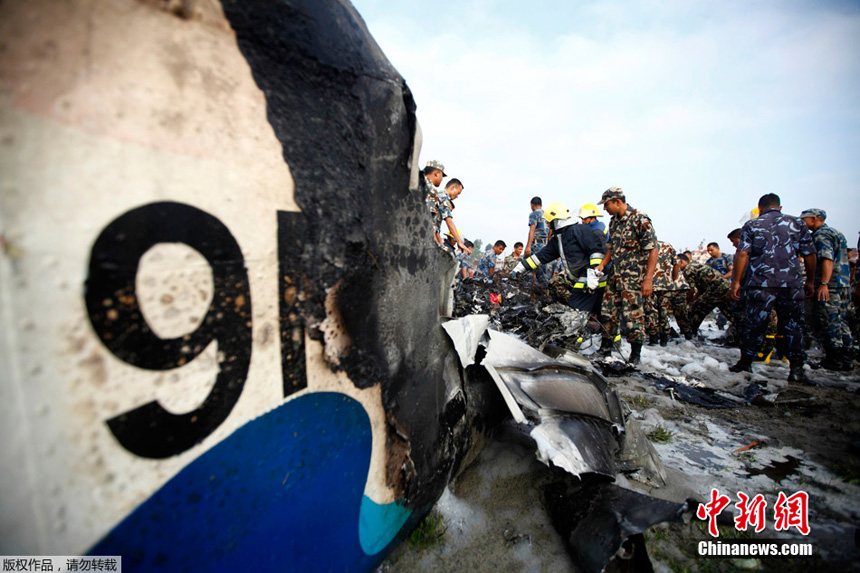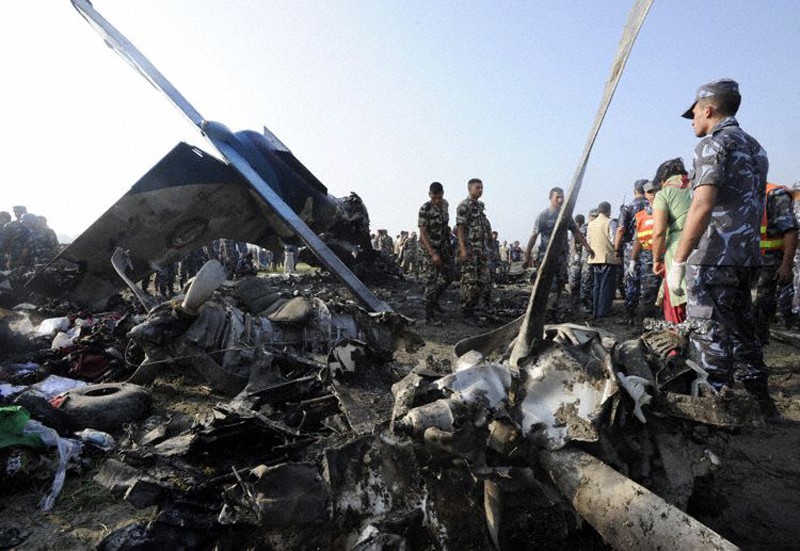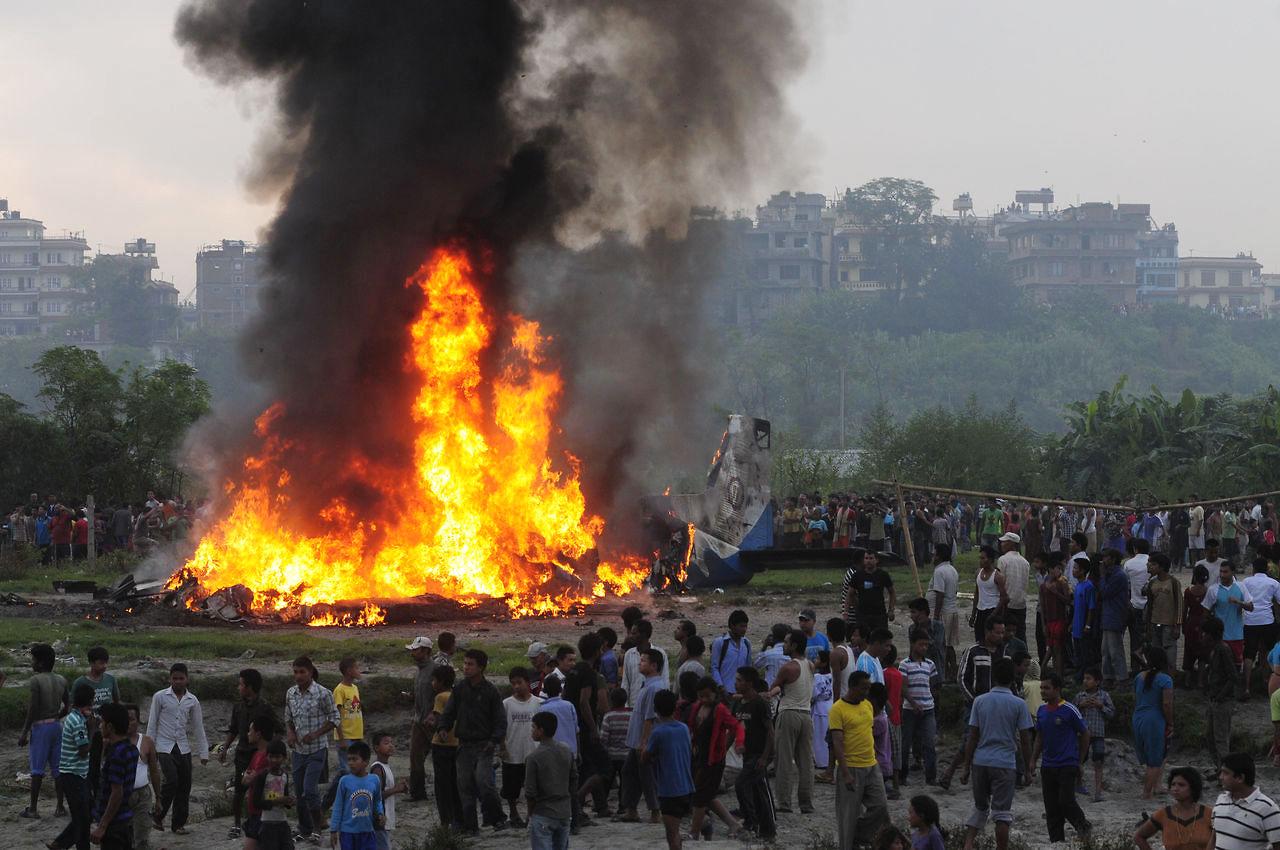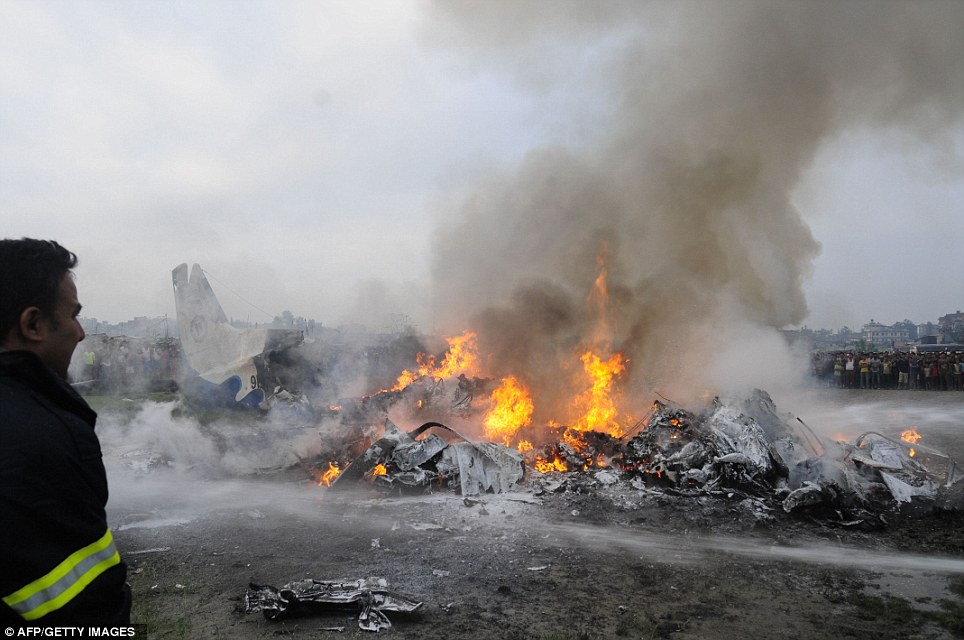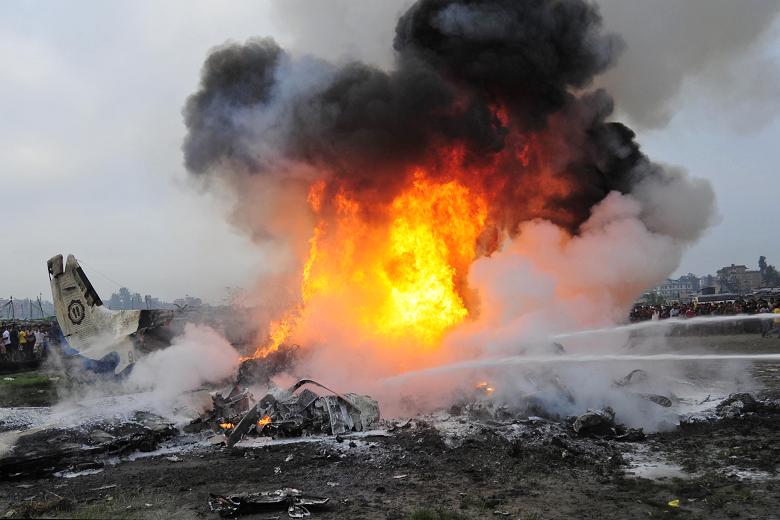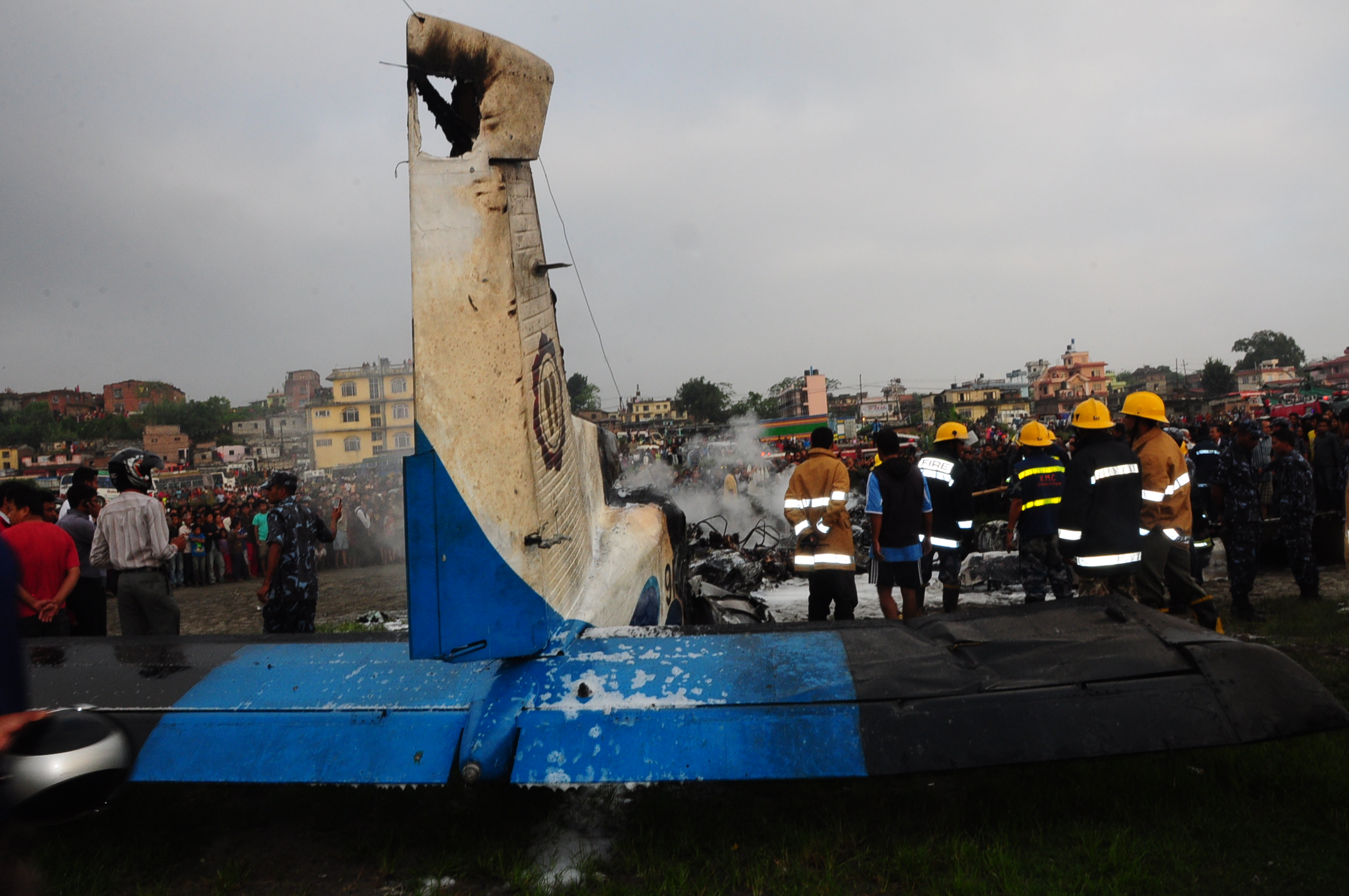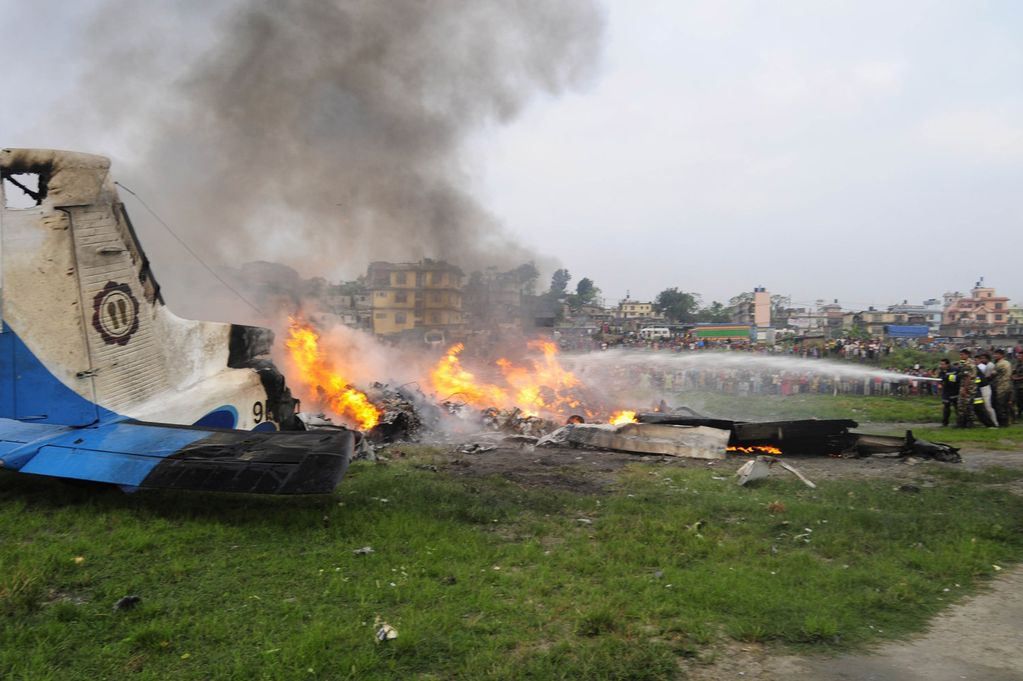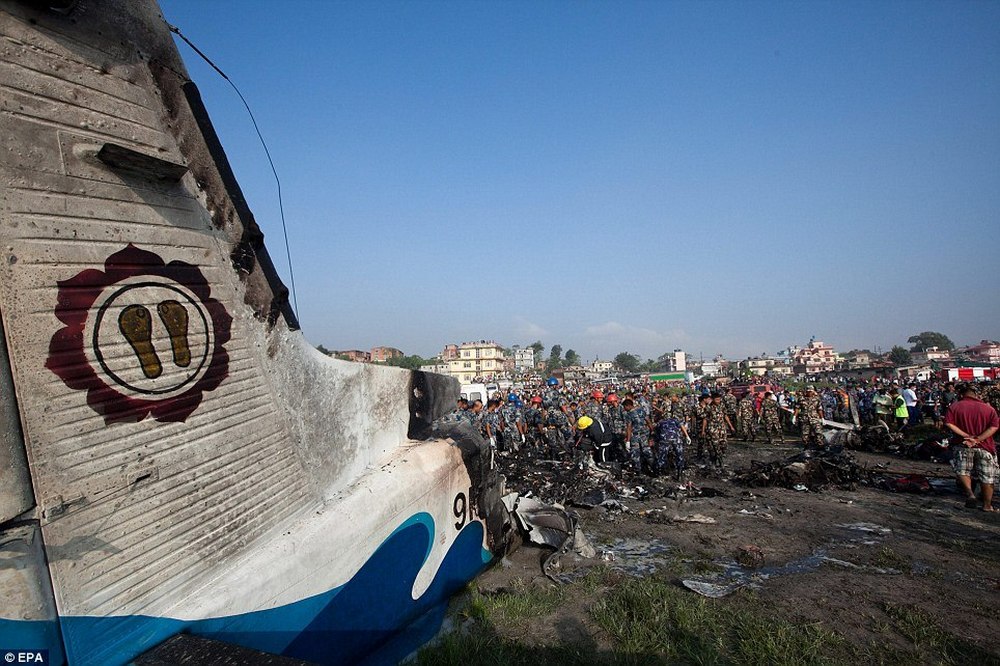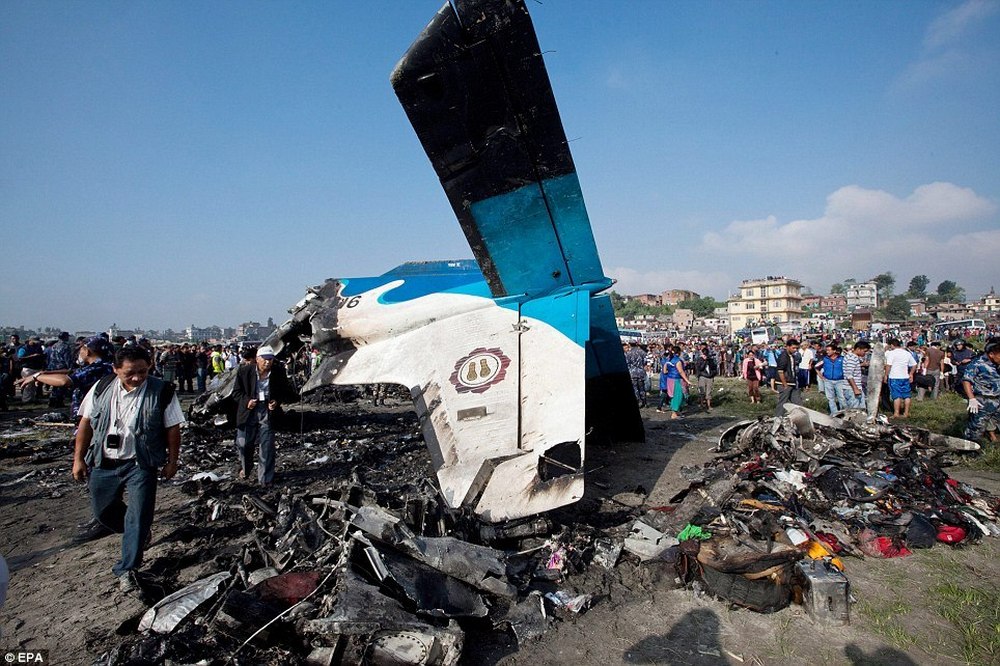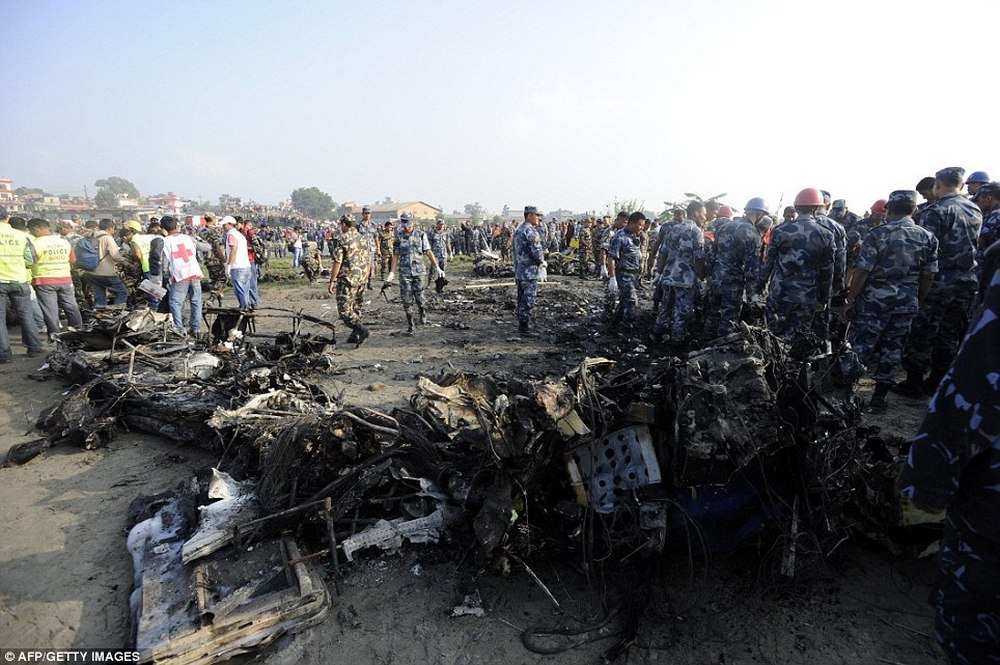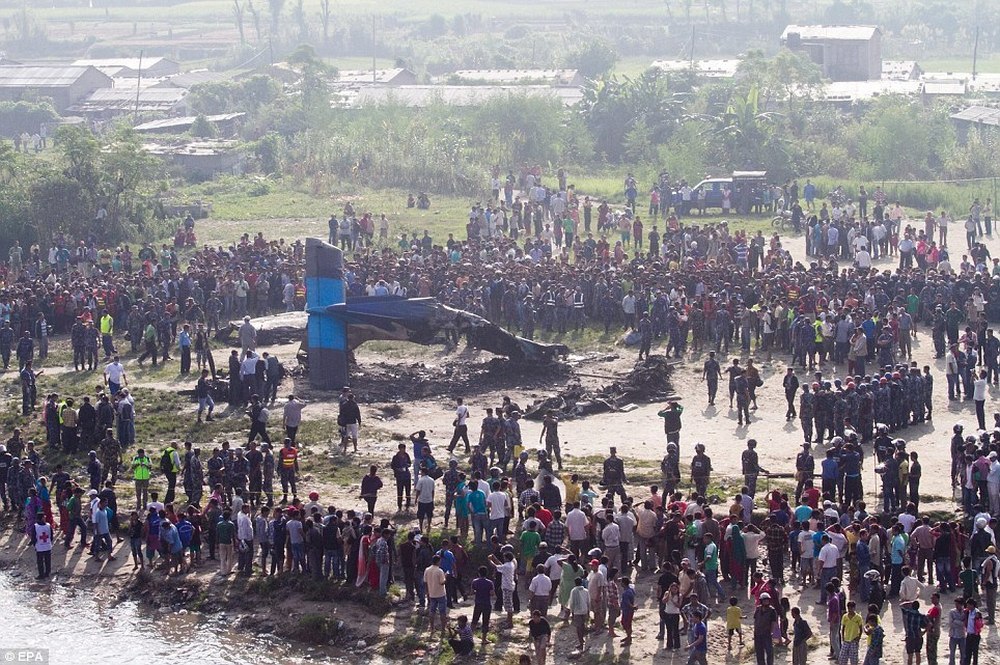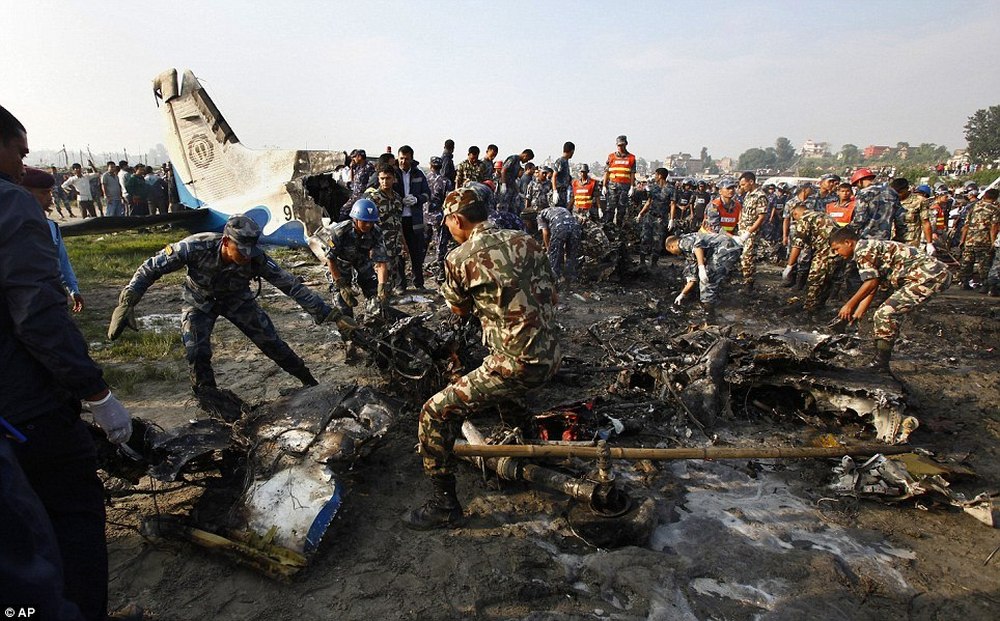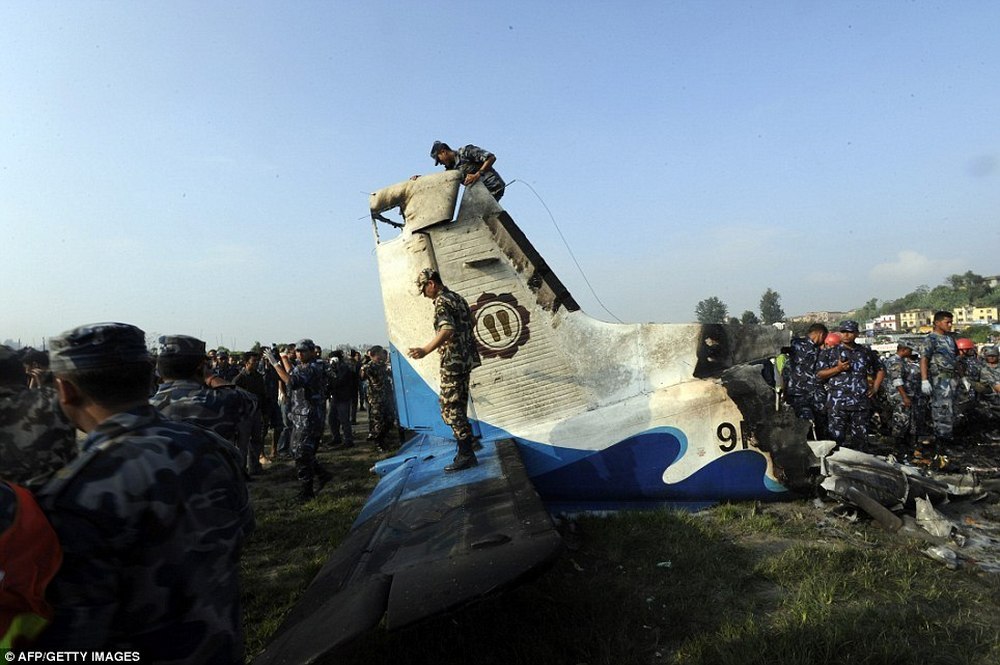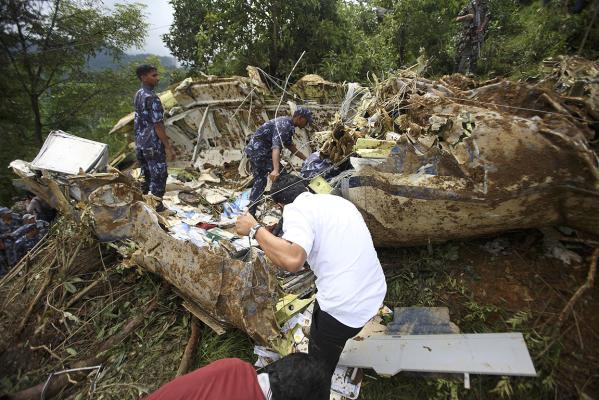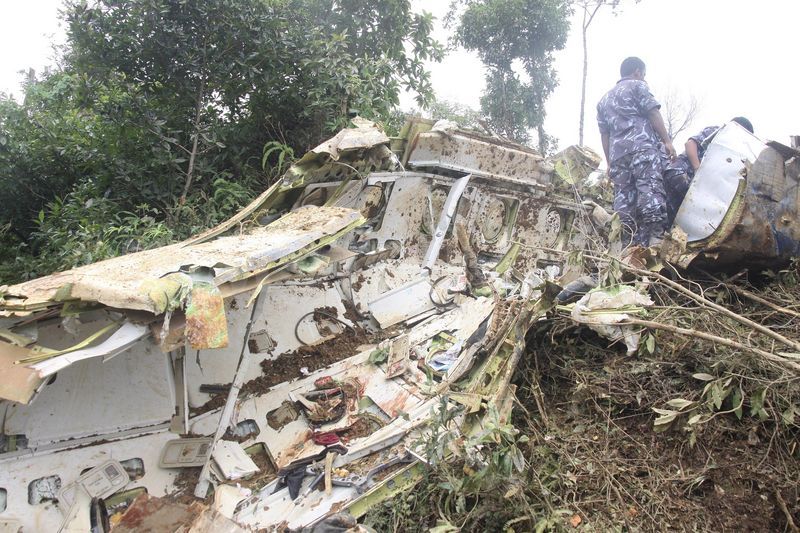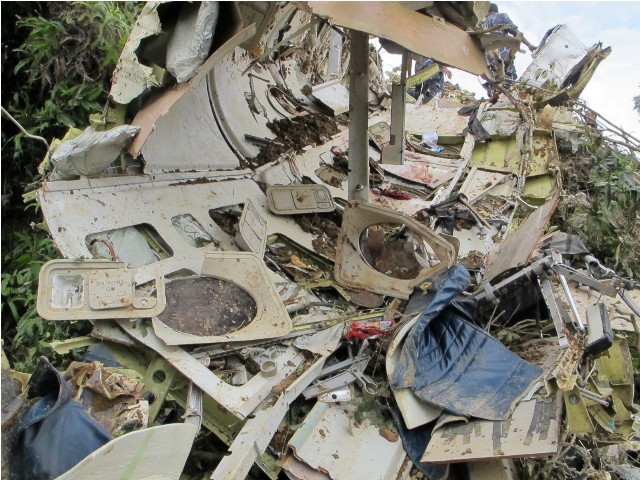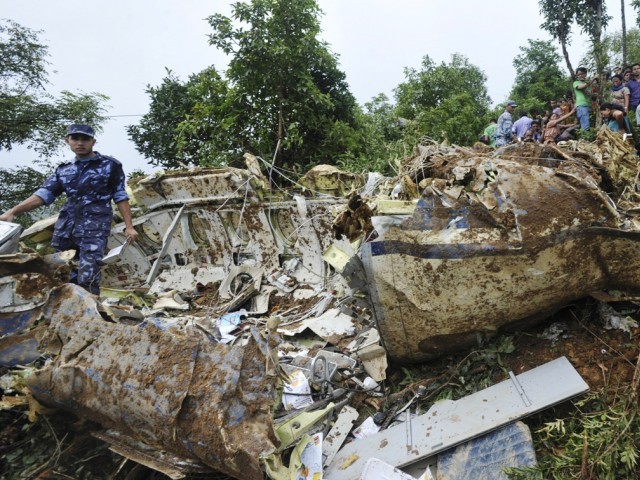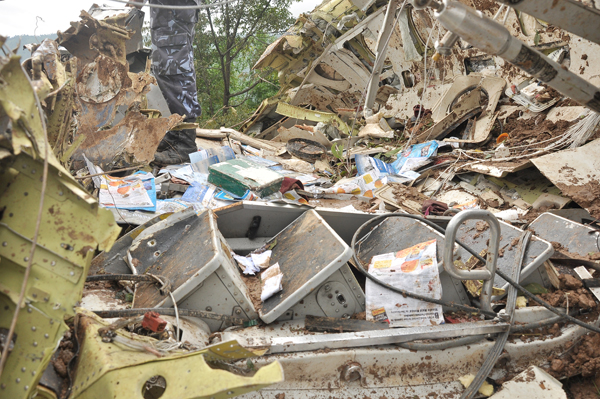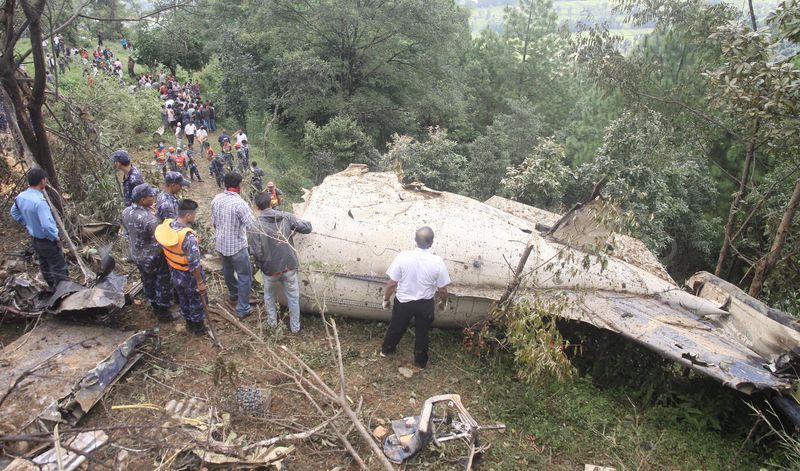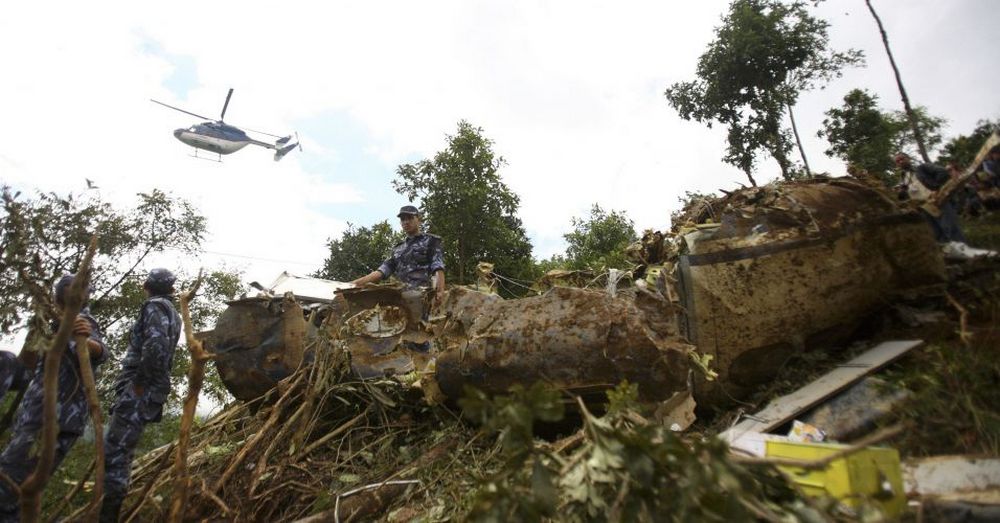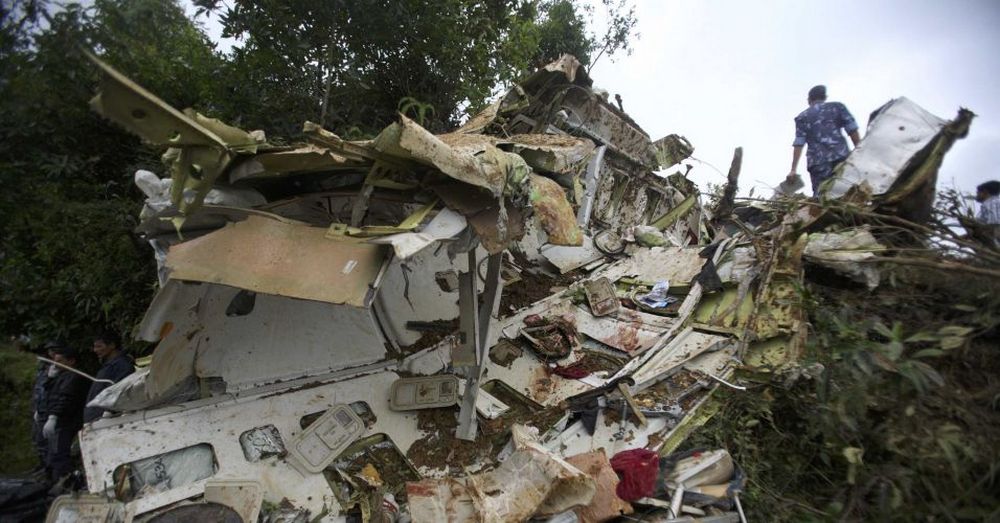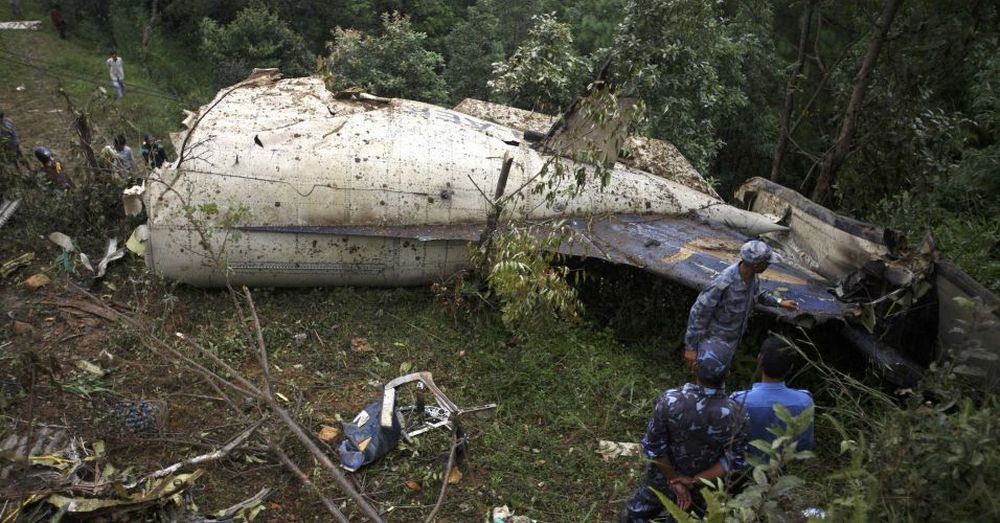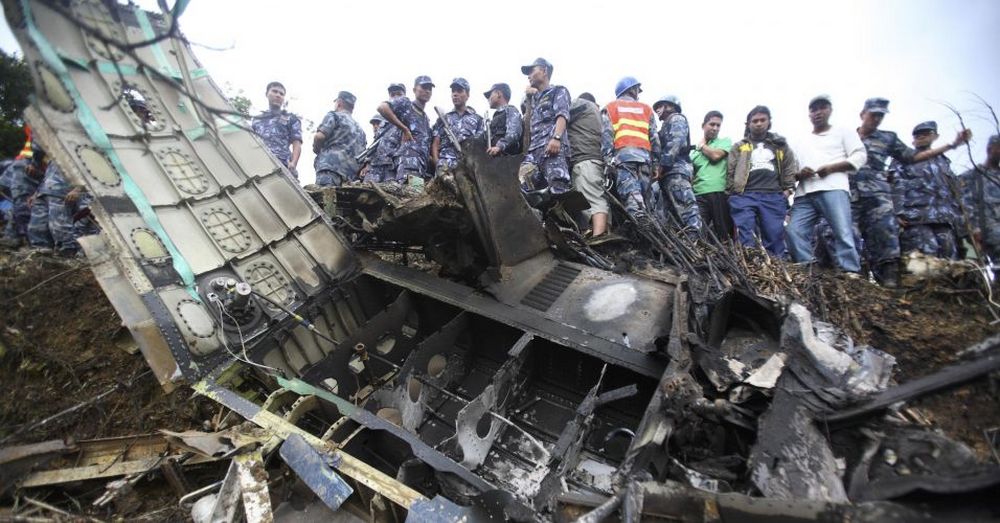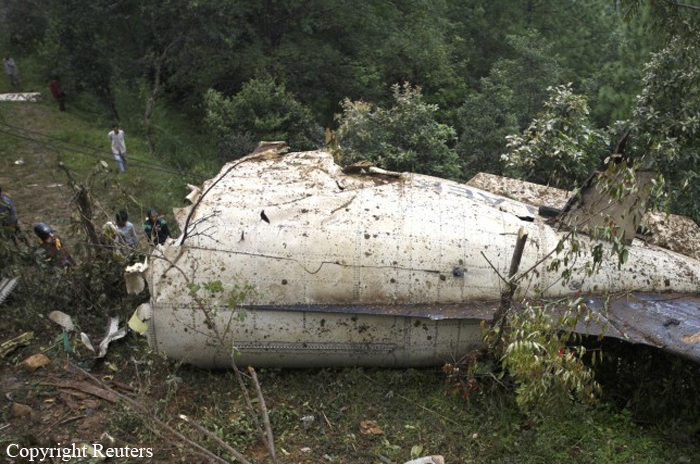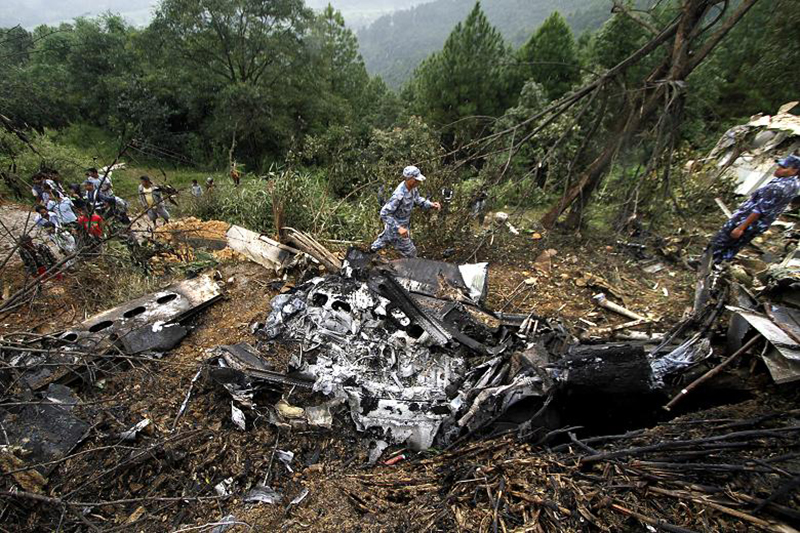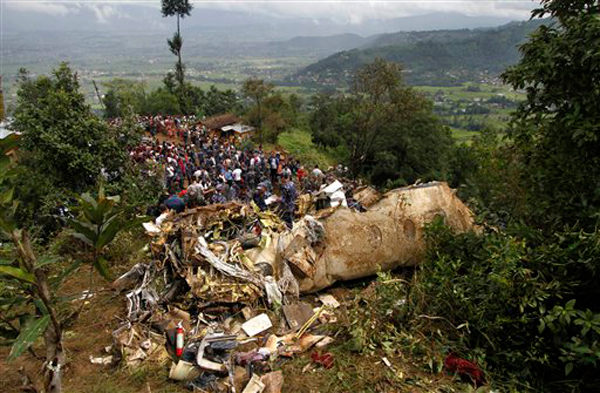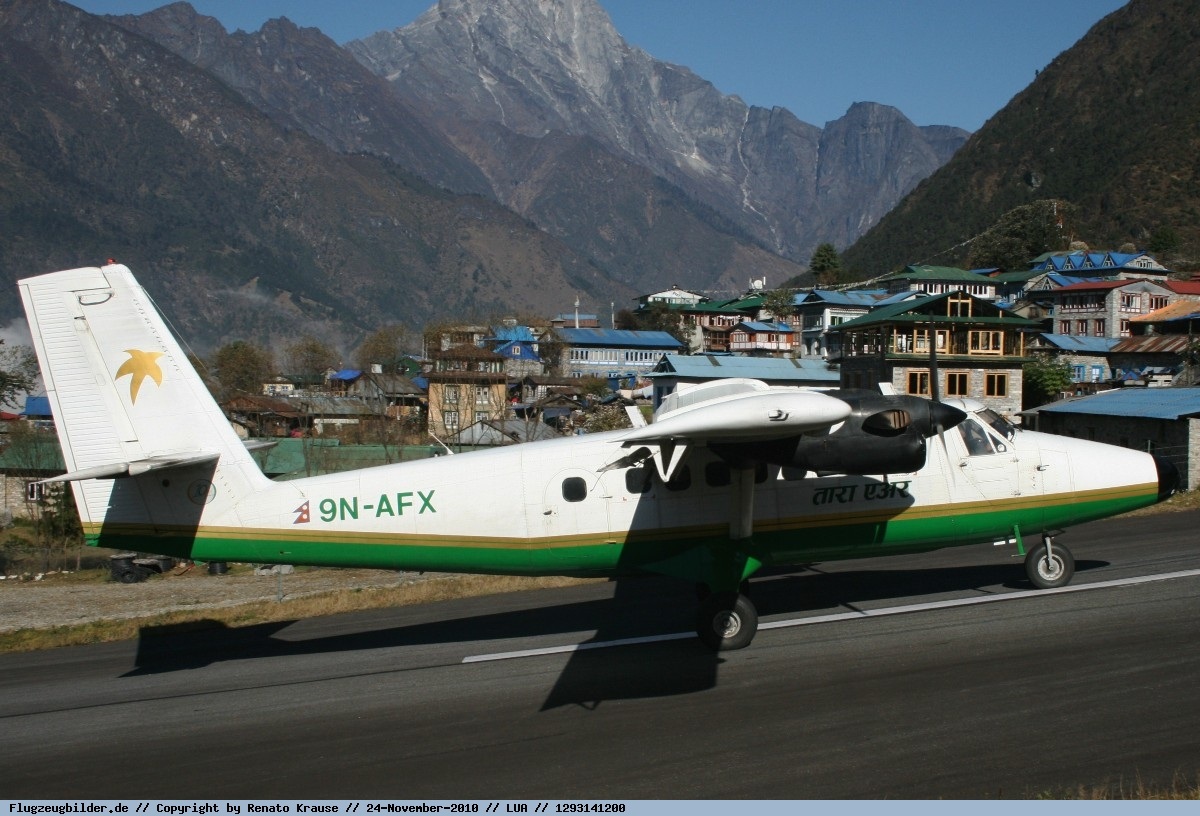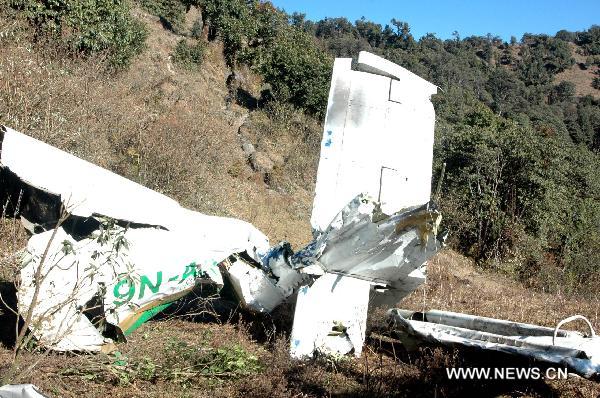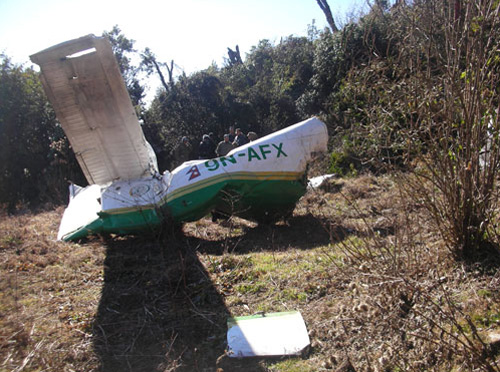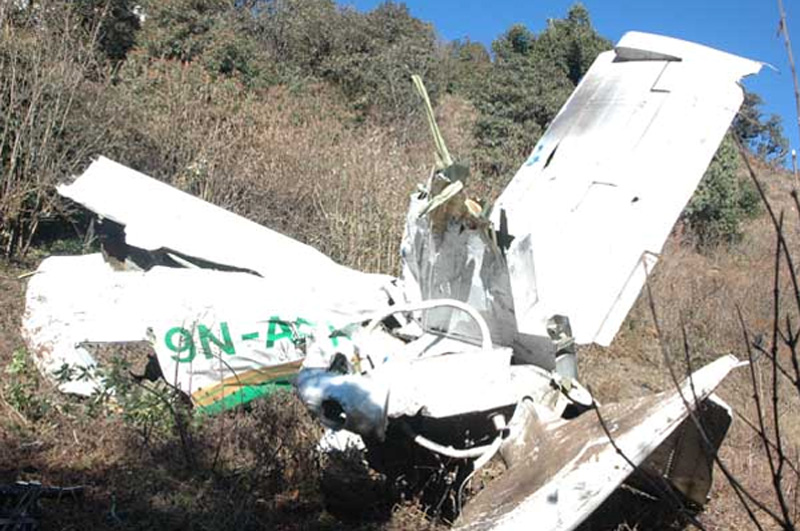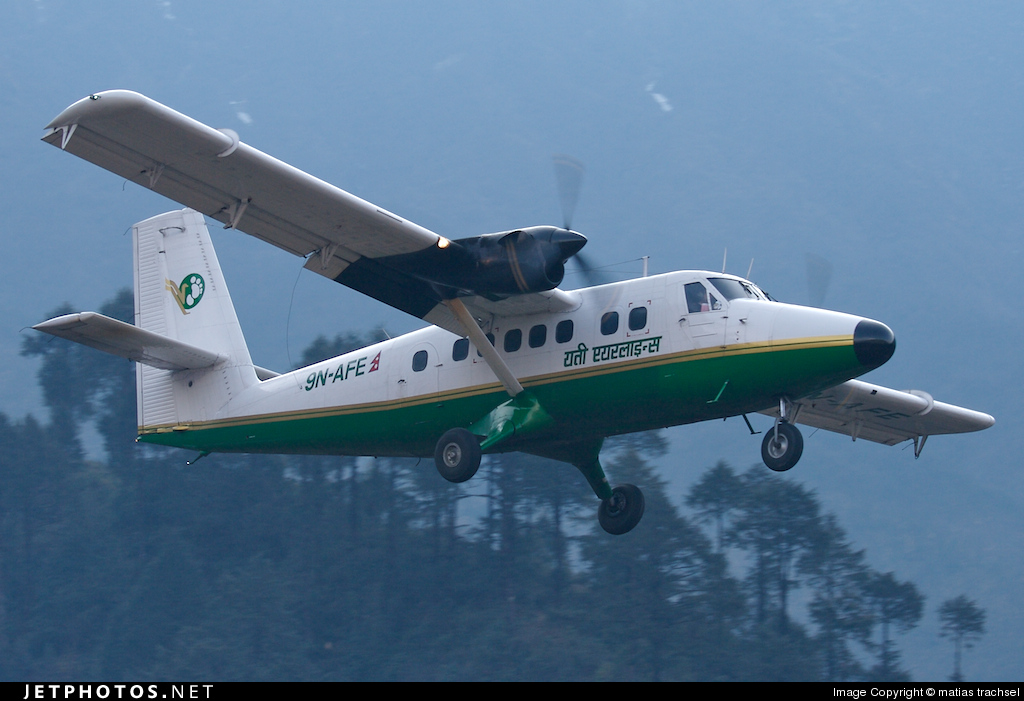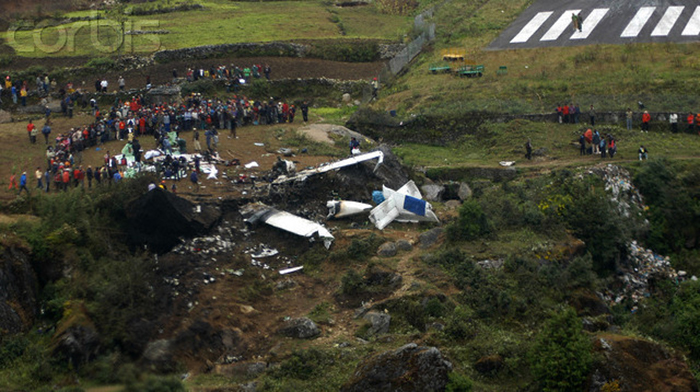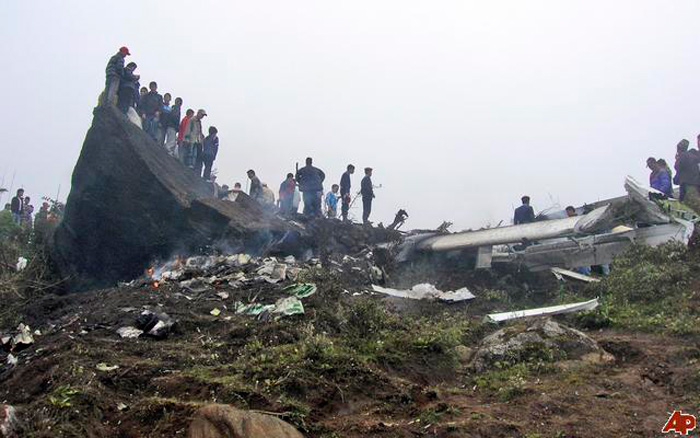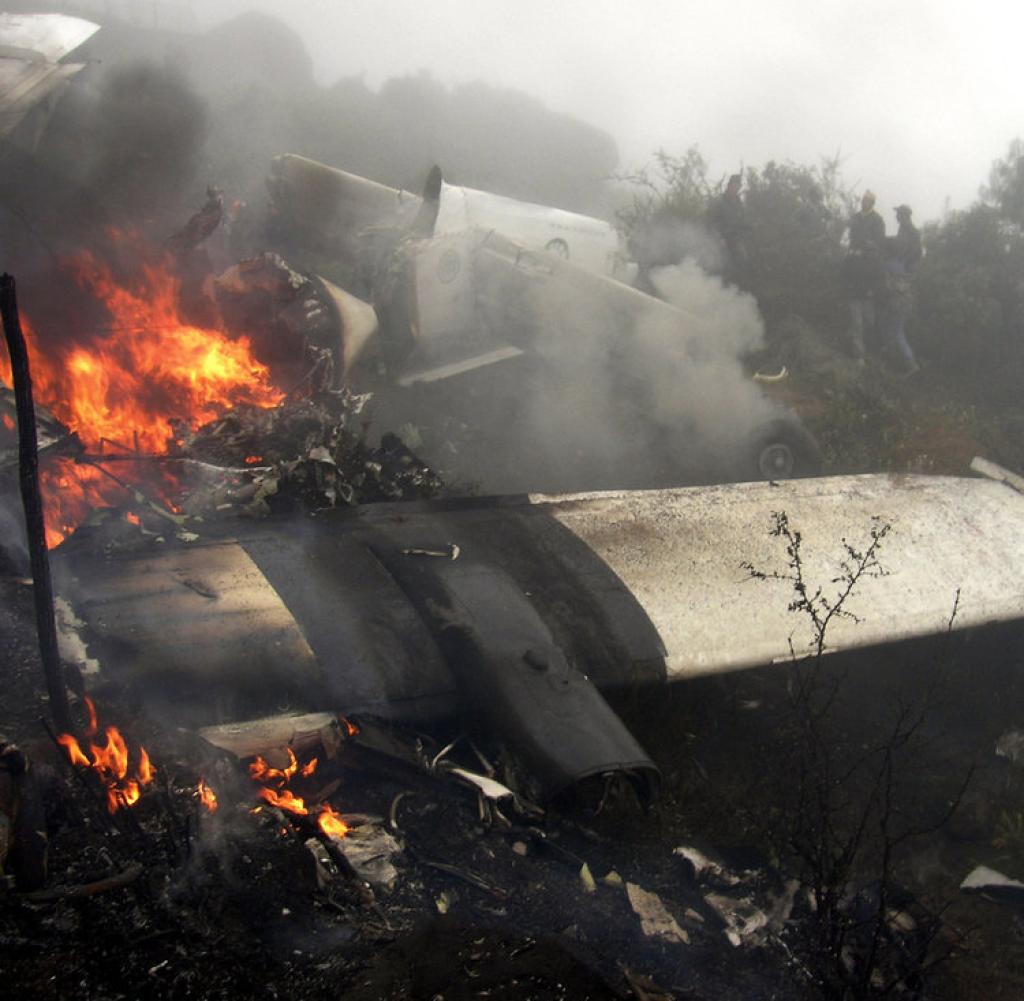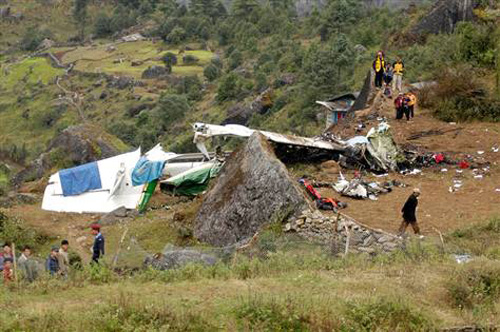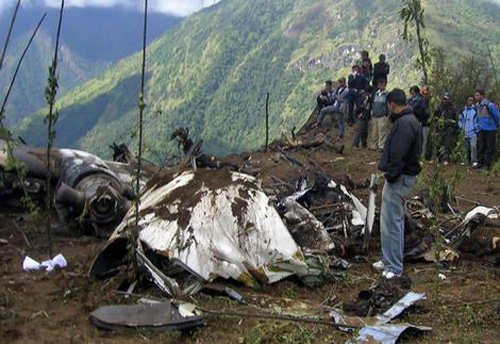Crash of a Canadair RegionalJet CRJ-200ER in Kathmandu: 18 killed
Date & Time:
Jul 24, 2024 at 1111 LT
Registration:
9N-AME
Survivors:
Yes
Schedule:
Kathmandu – Pokhara
MSN:
7772
YOM:
2003
Crew on board:
3
Crew fatalities:
Pax on board:
16
Pax fatalities:
Other fatalities:
Total fatalities:
18
Captain / Total hours on type:
4922.00
Copilot / Total hours on type:
1602
Aircraft flight hours:
28893
Aircraft flight cycles:
29788
Circumstances:
The airplane departed Kathmandu-Tribhuvan Airport, carrying technical engineers and staff of the airline. The airplane was ferried to Pokhara to proceed with a C-check maintenance program. At 05:25:55, the aircraft rotated near 120 knots computed airspeed. It attained a pitch up of 13 degrees within 4 seconds (15 degrees in 6 seconds) at a maximum calculated pitch rate of 8.6 degrees/second, and the aircraft rolled 26 degrees right at a maximum calculated roll rate of 15.5 degrees/second. The maximum pitch rate was obtained over a 0.25 s window, while sampling at 4 Hz. During this 3 second period, the aircraft reached 131 knots computed airspeed and 11 feet radio height (18 feet change in pressure altitude). At this time, the stick shaker activated on both sides for a duration of 4 seconds, which coincided with an unidentified GPWS audio message. The fuselage angle of attack recorded 6.9 degrees during the activation. Take-off During the subsequent 4 seconds from 05:26:01 to 05:26:05, the aircraft rolled left up to 55 degrees at a recorded roll rate of 36.6 degrees/second. The aircraft remained approximately 15 degrees nose up and ground peed remained steady around 147 knots. The radio height increased to 77 feet (95 feet change in pressure altitude). The N1 engine power remained constant at 92%. The stick shaker deactivated for 1 second, followed by another activation for 2 seconds correlating with another GPWS audio message. The stick pusher was also activated on both sides during the second stick shaker activation, which was immediately followed by a pitch down and a GPWS Pull Up message. At approximately 05:26:05, the aircraft rolled right reaching 94.6 degrees at the maximum capable recorded roll rate of 56.1 degrees/second. The aircraft pitched up to 19 degrees, followed by a reduction to 2 degrees pitch (recorded rate of -8.1 degrees/second) during the maximum roll angle. During the entire take-off, the heading changed by 12 degrees. The vertical acceleration ranged from 0.40G to 1.69G and the lateral acceleration peaked at 1.54G during the maximum roll rate. Impact into Terrain The final recorded value of the radio height was at 63 feet during a roll of 30 degrees right with pitch ranging between -3 degrees and 1 degree. The speed was 142 computed airspeed with the fuselage angle of attack reaching between 8 and 12 degrees. The last recorded location is approximately 6100 feet from the threshold of runway 02, just prior to taxiway Juliet. The aircraft impacted the terrain East of the runway at 27°42’3’’ North and 85°21’42’’ East. The right wing made first impact on the ground. There onwards, the impact trail extended by around 1000 ft towards the east of the runway. The captain was seriously injured while 18 other occupants were killed.
Probable cause:
The most probable cause of the accident was a deep stall during take-off because of an abnormally rapid pitch rate commanded at a lower than optimal rotation speed.
The following contributory factors were identified:
- Incorrect speeds calculated based on erroneous speedcard. The interpolated speedcard of the operator for 18,500 kg TOW mentions incorrect V-speeds for take-off. This error in the speedcard went unnoticed since its development. There was no acceptance/approval of the speedcard booklet.
- Failure to identify and address multiple previous events of high pitch rate during take-off by the operator.
- The operator showed gross negligence in complying with the prevailing practices of ferry flight planning, preparation and execution. There is a lack of consistent definition of ferry flights.
- Gross negligence and non-compliance by the operator during the entire process of cargo and baggage handling (weighing, loading, distribution and latching), while violating the provisions of operational manual and ground handling manual. The load was not adequately secured with straps, tie-downs, or nets, while the flight preparation was rushed.
The following contributory factors were identified:
- Incorrect speeds calculated based on erroneous speedcard. The interpolated speedcard of the operator for 18,500 kg TOW mentions incorrect V-speeds for take-off. This error in the speedcard went unnoticed since its development. There was no acceptance/approval of the speedcard booklet.
- Failure to identify and address multiple previous events of high pitch rate during take-off by the operator.
- The operator showed gross negligence in complying with the prevailing practices of ferry flight planning, preparation and execution. There is a lack of consistent definition of ferry flights.
- Gross negligence and non-compliance by the operator during the entire process of cargo and baggage handling (weighing, loading, distribution and latching), while violating the provisions of operational manual and ground handling manual. The load was not adequately secured with straps, tie-downs, or nets, while the flight preparation was rushed.
Final Report:

